

Creative Writing Lesson Plans: Week One
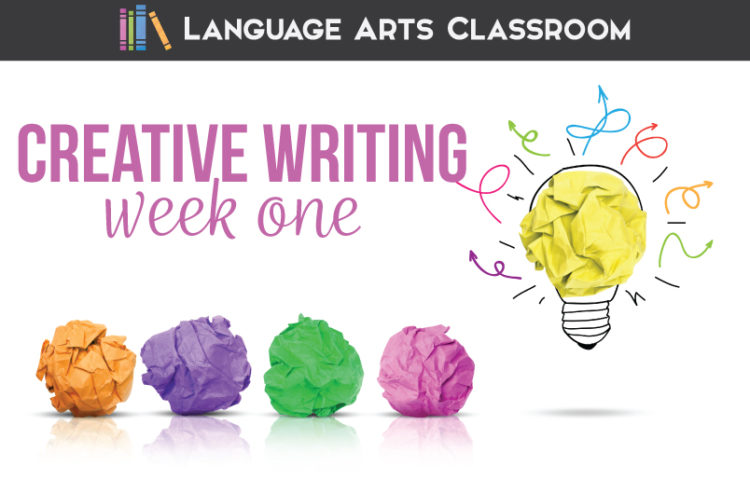
Looking for creative writing lesson plans? I am developing creative writing lesson ideas!
I’ve written and revamped my creative writing lesson plans and learned that the first week is vital in establishing a community of writers, in outlining expectations, and in working with a new class.
What are some good creative writing exercises?
Some good creative writing exercises include writing prompts, free writing, character development exercises, and fun writing games.
The first week, though, we establish trust—and then we begin powerful creative writing exercises to engage young writers and our community.
How can add encouragement in creative writing lesson plans?
I’ve found students are shy about writing creatively, about sharing pieces of themselves. A large part of the first week of class is setting the atmosphere, of showing everyone they are free to create. And! These concepts will apply to most writing lesson plans for secondary students.
Feel free to give me feedback and borrow all that you need! Below, find my detailed my day-by-day progression for creative writing lesson plans for week one.
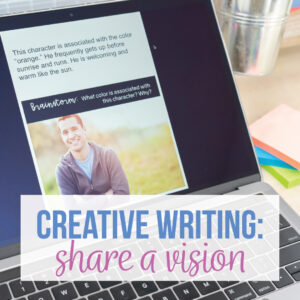
Creative Writing Lesson Day One: Sharing my vision
Comfort matters for young writers. I’m not a huge “ice breaker” type of teacher—I build relationships slowly. Still, to get student writing, we must establish that everyone is safe to explore, to write, to error.
Here are some ideas.
Tone and attitude
For day one with any lesson plan for creative writing, I think it is important to set the tone, to immediately establish what I want from my creative writing students. And that is…
them not to write for me, but for them. I don’t want them writing what they think I want them to write.
Does that make sense? Limitations hurt young writers. My overall tone and attitude toward young writers is that we will work together, create and write together, provide feedback, and invest in ourselves. Older kiddos think that they must provide teachers with the “correct” writing. In such a course, restrictions and boundaries largely go out the window.
Plus, I specifically outline what I believe they can produce in a presentation to set people at ease.
The presentation covers expectations for the class. As the teacher, I am a sort of writing coach with ideas that will not work for everyone. Writers should explore different methods and realize what works for them. First, not everyone will appreciate every type of writing—which is fine. But as a writing community, we must accept that we may not be the target audience for every piece of work.
Therefore, respect is a large component of the class. Be sure to outline what interactions you find acceptable within your classroom community.
Next, as their writing coach, I plan to provide ideas and tools for use. Their job is to decide what tools work for their creative endeavors. My overall message is uplifting and encouraging.
Finally, when we finish, I share the presentation with students so they can consult it throughout the semester. The presentation works nicely for meet-the-teacher night, too!
After covering classroom procedures and rules, I show students a TED Talk. We watch The Danger of a Single Story by Chimamanda Adichie. My goal is to show students that I don’t have a predetermined idea concerning what they should write. This discussion takes the rest of the class period.
Establishing comfort and excitement precedents my other creative writing activities. Personalize your “vision” activities for your lessons in creative writing. Honestly, doing this pre-work builds relationships with students and creates a positive classroom atmosphere.
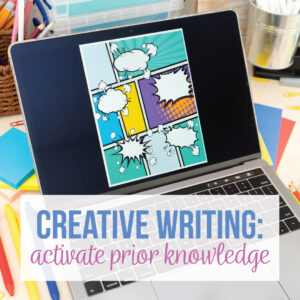
Creative Writing Lesson Day Two: Activating prior knowledge
Students possess prior knowledge concerning creative writing, but they might not consider that. Students should realize that they know what constitutes a great story. They might not realize that yet. An easy lesson plan for creative writing that will pay off later is to activate prior knowledge. Brainstorm creative, memorable, unforgettable stories with students. Share your thoughts too! You will start to build relationships with students who share the same tastes as you (and those that are completely different!).
Activation activity
During this activity, I want to see how students work together, and I want to build a rapport with students. Additionally, activating prior knowledge provides a smooth transition into other creative writing activities.
This creative writing activity is simple:
I ask students to tell me memorable stories—books, play, tv shows, movies—and I write them on the board. I add and veto as appropriate. Normally doing these classroom discussions, we dive deeper into comedies and creative nonfiction. Sometimes as we work, I ask students to research certain stories and definitions. I normally take a picture of our work so that I can build creative writing lessons from students’ interests.
This takes longer than you might think, but I like that aspect. This information can help me shape my future lessons.
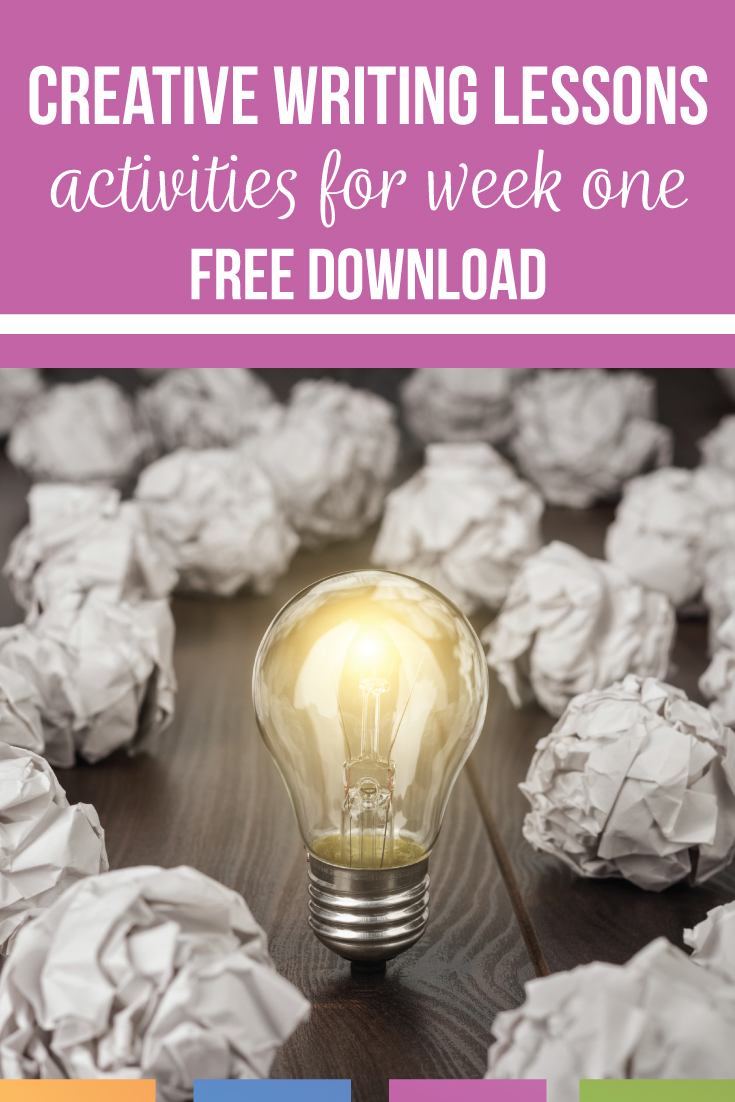
With about twenty minutes left in class, I ask students to form small groups. I want them to derive what makes these stories memorable. Since students complete group and partner activities in this class, I also watch and see how they interact.
Students often draw conclusions about what makes a story memorable:
- Realistic or true-to-life characters.
- Meaningful themes.
- Funny or sad events.
All of this information will be used later as students work on their own writing. Many times, my creative writing lessons overlap, especially concerning the feedback from young writers.
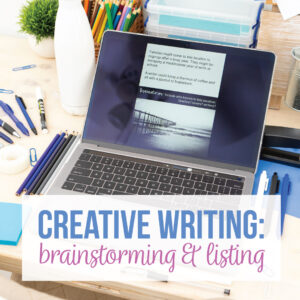
Creative Writing Lesson Day Three: Brainstorming and a graphic organizer
From building creative writing activities and implementing them, I now realize that students think they will sit and write. Ta-da! After all, this isn’t academic writing. Coaching creative writing students is part of the process.
Young writers must accept that a first draft is simply that, a first draft. Building a project requires thought and mistakes. (Any writing endeavor does, really.) Students hear ‘creative writing’ and they think… easy. Therefore, a first week lesson plan for creative writing should touch on what creativity is.
Really, creativity is everywhere. We complete a graphic organizer titled, “Where is Creativity?” Students brainstorm familiar areas that they may not realize have such pieces.
The ideas they compile stir all sorts of conversations:
- Restaurants
- Movie theaters
- Amusement parks
By completing this graphic organizer, we discuss how creativity surrounds us, how we can incorporate different pieces in our writing, and how different areas influence our processes.

Creative Writing Lesson, Days Four and Five: Creative Nonfiction
Students need practice writing, and they need to understand that they will not use every word they write. Cutting out lines is painful for them! Often, a lesson plan for creative writing involves providing time for meaningful writing.
For two days, we study and discuss creative nonfiction. Students start by reading an overview of creative nonfiction . (If you need mentor texts, that website has some as well.) When I have books available, I show the class examples of creative nonfiction.
We then continue through elements of a narrative . Classes are sometimes surprised that a narrative can be nonfiction.
The narrative writing is our first large project. As we continue, students are responsible for smaller projects as well. This keeps them writing most days.
Overall, my students and I work together during the first week of any creative writing class. I encourage them to write, and I cheer on their progress. My message to classes is that their writing has value, and an audience exists for their creations.
And that is my week one! The quick recap:
Week One Creative Writing Lesson Plans
Monday: Rules, procedures, TED Talk, discussion.
Tuesday: Prior knowledge—brainstorm the modeling of memorable stories. Draw conclusions about storytelling with anchor charts. Build community through common knowledge.
Wednesday: Graphic organizer.
Thursday and Friday: Creative nonfiction. Start narrative writing.
Students do well with this small assignment for the second week, and then we move to longer creative writing assignments . When classesexperience success with their first assignment, you can start constructive editing and revising with them as the class continues.

These creative writing activities should be easy implement and personalize for your students.
Would you like access to our free library of downloads?
Marketing Permissions
We will send you emails, but we will never sell your address.
You can change your mind at any time by clicking the unsubscribe link in the footer of any email you receive from us, or by contacting us at [email protected] . We will treat your information with respect. For more information about our privacy practices please visit our website. By clicking below, you agree that we may process your information in accordance with these terms.
We use Mailchimp as our marketing platform. By clicking below to subscribe, you acknowledge that your information will be transferred to Mailchimp for processing. Learn more about Mailchimp’s privacy practices.
Are you interested in more creative writing lesson ideas? My Facebook page has interactive educators who love to discuss creative writing for middle school and high school creative writing lesson plans. Join us!

creative writing creative writing activities
- Ghost Writing
- Proofreading
- Book Promotion
- e-Book Writing
- Blog Writing
- Website Content Writing
- Article Writing
- Book Video Trailer
- Author Website
- Case Studies
- Testimonials
- +1 628 227 3315
- Book a Call
- Get a Quote
Sign Up Now & Let’s Get Started
50 creative writing prompts for middle school students.
- September 11, 2023
- 11 min read
Table of Contents:
Why creative writing matters, prompts to explore personal experiences, prompts for imagining fantastic worlds, prompts for exploring emotions, prompts to unleash adventure, prompts for humor and laughter, writing prompts for middle school mystery and suspense section, prompts to reflect on the future, prompts for historical time travel, writing prompts for middle school to target sci-fi and futuristic fantasies, writing prompts for middle school to dive into nature, writing prompts for middle school for alternate realities, are these prompts suitable for both classroom and individual use, creative writing.
Press The Play Button On The Audio To Listen Complete Article!
Middle school is a time of exploration, growth, and boundless imagination. It’s a phase where young minds are eager to express themselves, and what better way to channel this energy than through creative writing? This article explores 50 creative writing prompts for middle school students to worlds of wonder, emotion, and adventure. These prompts stimulate their creativity, boost their writing skills, and encourage them to think beyond the ordinary.
Creative writing holds a significance that extends far beyond the confines of a classroom. It is a form of expression that acts like a mirror reflecting human emotions, similar to what is explored in What are the three main purposes for writing? . It is a powerful medium through which individuals can express their innermost thoughts, emotions, and ideas, allowing them to connect with themselves and the world around them on a deeper level. This art form empowers individuals to unleash their imagination and paint vivid landscapes of words, enabling them to communicate in ways that traditional language often falls short of. For middle school students, creative writing is a journey of exploration and growth, much like the journey described in How to write a good story: A complete process . As they engage with a diverse array of writing prompts for middle school, they embark on a path that enriches their vocabulary, refines their grasp of grammar, and teaches them the invaluable skill of structuring their thoughts coherently and effectively. Through crafting narratives and weaving intricate tales, students learn the art of storytelling, a skill crucial in literature and various aspects of life. Whether it’s penning down a compelling essay, delivering a persuasive speech, or even drafting a well-structured email, the ability to organize ideas compellingly is a trait that serves students well throughout their academic and professional journey. However, the benefits of creative writing go well beyond linguistic and organizational services like book writing services . This form of expression acts as a mirror that reflects the complexities of human emotions. As students immerse themselves in crafting characters, settings, and plotlines, they inherently develop a deep sense of empathy. By stepping into the shoes of diverse characters and exploring the world from various perspectives, students cultivate an understanding of different viewpoints, backgrounds, and experiences. This broadens their worldview and nurtures their ability to relate to and connect with people from all walks of life.
- Discovering a Hidden Door
Imagine stumbling upon a mysterious door in your school that no one else has noticed. Where does it lead, and what adventures await on the other side?
- The Day I Traveled Through Time
You wake up one morning to find yourself in a different period. Describe your experiences and the challenges you face in this unfamiliar era.
- My Conversation with a Talking Animal
While wandering in the woods, you encounter an animal that can communicate with you. Write about your unexpected conversation and the wisdom the animal imparts.
- A Mysterious Message in a Bottle
You discover a message in a bottle washed up on the shore. What does the message say, and how does it change your life?
- Life on a Floating Island
Describe a world where entire civilizations exist on floating islands in the sky. What are the unique challenges and wonders of this airborne realm?
- Journey to the Center of a Candy Planet
You embark on a journey to the core of a planet made entirely of candy. Detail your adventures as you traverse the sugary landscapes.
- The Robot’s Secret Rebellion
In a futuristic city, robots have secretly started rebelling against their human creators. Explore the events leading up to this uprising and the consequences that follow.
- When Magic Came to the Modern World
Magic suddenly becomes real in the present day. How does society change, and how do you adapt to this new magical reality?
- The Joy of Finding a Lost Toy
Revisit a childhood memory of losing a cherished toy and the overwhelming happiness of eventually finding it.
- A Moment of Overcoming Fear
Write about when you faced a fear head-on and emerged stronger and braver on the other side.
- The Bittersweet Farewell
Explore the emotions surrounding a farewell to a close friend moving away. How do you cope with the mixture of joy and sadness?
- An Unexpected Act of Kindness
Describe an instance where a stranger’s small act of kindness profoundly impacts your life and perspective.
- Quest for the Enchanted Crown
Embark on a quest to retrieve a stolen enchanted crown from a treacherous dragon’s lair. Chronicle your epic adventure and the challenges you must overcome.
- Lost in a Haunted Forest
You find yourself lost in a mysterious and haunted forest. Describe your eerie surroundings and the spine-chilling encounters you experience.
- Exploring an Abandoned Space Station
Write about your exploration of a deserted space station, uncovering its secrets and unraveling the mysteries of its past.
- Time-Traveling to Historical Events
Where and when would you go if you could time-travel to any historical event? Describe your experiences and the impact they have on your perspective.
- The Day I Turned into a Vegetable
Imagine waking up one day to find yourself transformed into a vegetable. How do you communicate, and what hilarious misadventures ensue?
- Conversations Between My Pets
Write a humorous dialogue between your pets discussing their daily lives, adventures, and their peculiar perspectives on the world.
- When My Room Became a Miniature Zoo
Describe a scenario where your room suddenly becomes a mini-zoo filled with various animals. How do you manage this unexpected turn of events?
- The Misadventures of Super Socks
Create a quirky superhero story where a pair of socks gains extraordinary powers and embarks on comical crime-fighting escapades.
- The Puzzle of the Whispering Walls
Detail a suspenseful investigation into the strange phenomenon of walls that whisper cryptic messages, leading to an unexpected revelation.
- Footprints in the Forbidden Attic
You discover mysterious footprints leading to the forbidden attic in your house. Write about your daring exploration and the secrets you uncover.
- The Disappearance of the Midnight Carnival
Describe the mysterious disappearance of a beloved carnival that only operates at midnight. What clues do you follow to solve the enigma?
- The Secret Diary of a Famous Explorer
You stumble upon the secret diary of a renowned explorer. Unveil the adventures chronicled within its pages and the hidden truths it holds.
- A Glimpse into Life as an Adult
Imagine yourself as an adult and write about a day in your future life. How have your goals, priorities, and perspectives evolved?
- Inventing a Revolutionary Gadget
Design a revolutionary gadget that changes the world. Describe its features, benefits, and the impact it has on society.
- My First Day on Another Planet
Transport yourself to an alien planet and narrate your experiences on the first day of your interstellar adventure.
- The World After Solving Pollution
Describe a world where pollution has been successfully eliminated. How does this achievement reshape the environment, society, and daily life?
- Prompts for Exploring Friendship
Write about a strong and unbreakable bond between two friends. What challenges have they overcome together, and how has their friendship evolved?
- Adventures of the Dynamic Duo
Create a story about a dynamic duo who embark on thrilling adventures together. What makes their partnership special, and how do they complement each other?
- A Magical Friend from a Book
Imagine a character from a book coming to life and becoming your friend. Describe your magical friendship and the escapades you share.
- Messages in a Bottle Between Pen Pals
Two pen pals communicate through messages sent in bottles across a vast ocean. Write about their unique form of friendship and the stories they share.
- An Interview with a Renaissance Artist
Travel back in time to interview a famous Renaissance artist. Explore their inspirations, struggles, and the impact of their art on the world.
- Surviving the Titanic Disaster
Imagine being a passenger on the Titanic and surviving the tragic sinking. Chronicle your experiences and the lessons you learn from the ordeal.
- Ancient Egypt: Through the Eyes of a Pharaoh
Experience life as an ancient Egyptian pharaoh. Describe the grandeur of your rule, interactions with subjects, and leadership challenges.
- Encountering Dinosaurs in Prehistoric Times
Describe an adventurous journey to prehistoric times, where you encounter dinosaurs and experience the wonders and dangers of the ancient world.
- When Robots Ruled the World
Envision a world where robots have taken over as rulers. Detail the consequences of this robotic regime and the struggles of human resistance.
- Galactic Explorers on a New Frontier
Join a group of galactic explorers as they venture into uncharted space territories. Describe their discoveries, encounters, and the mysteries they unravel.
- The Day I Met an Alien from Mars
Write about the day you encounter a friendly alien from Mars. How do you communicate, and what do you learn from each other?
- Earth 3000: A Utopian Dream or Dystopian Reality?
Transport yourself to the year 3000 and describe the state of the Earth. Is it a romantic paradise or a dystopian nightmare? What led to this outcome?
- Conversations with Forest Creatures
Imagine having conversations with animals in a magical forest. Write about the wisdom they share and the adventures you embark on together.
- My Adventure in the Enchanted Rainforest
Describe your thrilling adventure through an enchanted rainforest with mystical creatures and hidden secrets.
- The Underwater Discovery: Mermaid’s Tale
You discover a hidden underwater world inhabited by mermaids. Chronicle your underwater journey and the interactions you have with these mythical beings.
- Exploring a World Inside a Dewdrop
Write about a micro-adventure inside a dewdrop, where you encounter miniature worlds and experience nature from a new perspective.
- Stepping into a Mirror Universe
Describe an experience where you step into an alternate reality through a mirror. How is this world different from yours, and what challenges do you face?
- The Butterfly Effect: Changing a Single Moment
Explore the butterfly effect concept by narrating a story where changing a single moment in the past has a cascading impact on the present and future.
- My Life as a Fictional Character
Imagine living the life of a fictional character from your favorite book. Describe your experiences as you navigate their world and story.
- When Dreams Became Our Reality
Write about a world where dreams have the power to shape reality. How do people use their dreams to create their lives, and what challenges arise?
- The Ethereal Library
Imagine a mystical library that holds books containing the stories of every possible life you could have lived. Write about a person who stumbles upon this library and can read the book of their alternate life stories.
- The Reality Architect
In a future society, some specialized architects design alternate realities for individuals seeking escape from their own lives. Write about a reality architect and their journey to create the perfect alternate world for a client.
- The Convergence Point
Describe a world where all alternate realities converge at a single point in time. People from different realities can meet and interact for a brief period. Write about the challenges and opportunities that arise during this unique convergence.
The suitability of writing prompts for middle school for classroom and individual use depends on their content and complexity. Prompts encouraging critical thinking, creative expression, and thoughtful discussion can work well in both settings. However, there are a few considerations to keep in mind:
- Ensure that the prompts are clear and easily understandable by individuals and a group of students. Avoid overly complex language or concepts that might be confusing.
- Writing prompts for middle school allow various interpretations, and responses can engage individual learners and groups. This flexibility encourages students to express their unique perspectives.
- Choose interesting and relevant writing prompts for middle school to the target audience, whether in a classroom full of students or individuals working independently. Engaging prompts are more likely to spark enthusiasm and thoughtful responses.
- Prompts that invite discussion and debate can lead to rich and meaningful conversations for classroom use. These prompts should be open-ended and encourage diverse viewpoints.
Middle school is critical for nurturing creativity, similar to the journey detailed in How to launch a book: The ultimate guide for authors , young students’ creativity, and honing writing skills. These 50 creative writing prompts for middle school offer many opportunities to explore diverse themes, emotions, and scenarios while refining their writing abilities. Whether they’re crafting tales of time travel, exploring futuristic realms, or delving into the mysteries of the past, these prompts will ignite the imagination and open new avenues of self-expression for budding writers.
limited Time offer
50% off on all services.
REDEEM YOUR COUPON: ABW50
Are You Prepared to Share Your Story with the World?
Proceed To The Next Phase Of Your Publishing Adventure And Transform Your Manuscript Into A Published Book.
Recommended Blogs
The 12 most successful self-published authors and their stories, locating the nearest books-a-million store: a guide for book lovers in the usa, how to write a book report: 9 simple steps, leaving so soon.
SIGN UP NOW TO ACTIVATE YOUR 50% OFF COUPON NOW!
Discuss With Our Content Strategist Toll Free +1 628 227 3315
Automated page speed optimizations for fast site performance
- Grades 6-12
- School Leaders
FREE Poetry Worksheet Bundle! Perfect for National Poetry Month.
10 Creative Writing Activities That Help Students Tell Their Stories
Lower the stakes and help them get started.
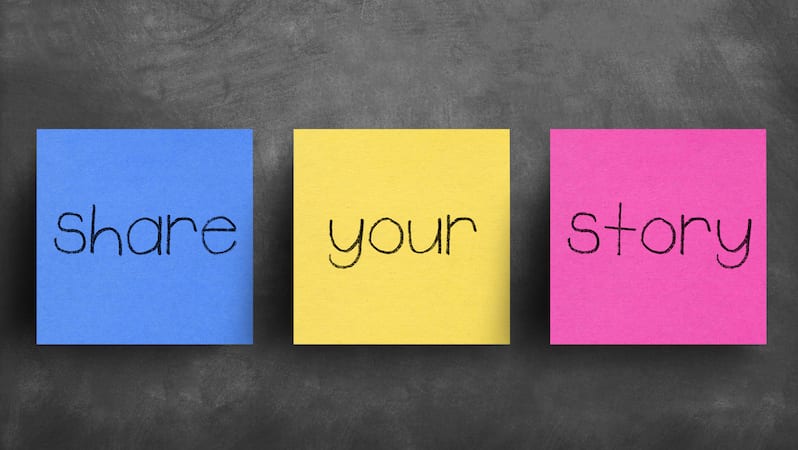
“I don’t have a story. There’s nothing interesting about my life!” Sound familiar? I don’t know a teacher who hasn’t heard students say this. When we ask our students to write about themselves, they get stuck. We know how important it is for them to tell their own stories. It’s how we explore our identities and keep our histories and cultures alive. It can even be dangerous when we don’t tell our stories (check out this Ted Talk given by novelist Chimamanda Ngozi Adichie and share it with your students for more on that). Storytelling is essential for every subject, not just English Language Arts; students dive deeper and engage when they practice thinking about how their own stories intersect with historical events, civic engagement, and the real-world implications of STEM. These 10 creative writing activities can work in every subject you teach:
Here are 10 of our favorite story telling activities that inspire students:
1. write an “i am from” poem.
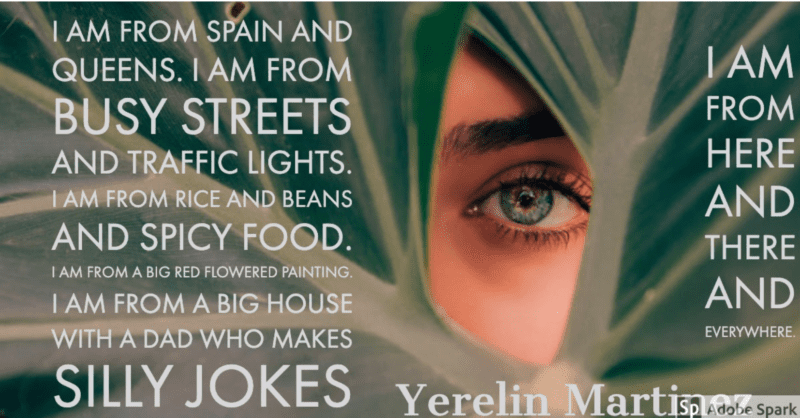
Students read the poem “I am From” by George Ella Lyon. Then, they draft a poem about their own identity in the same format Lyon used. Finally, students create a video to publish their poems. We love this one because the mentor text gives a clear structure and example that students can follow. But the end result is truly unique, just like their story.
2. Design a social media post to share an important memory
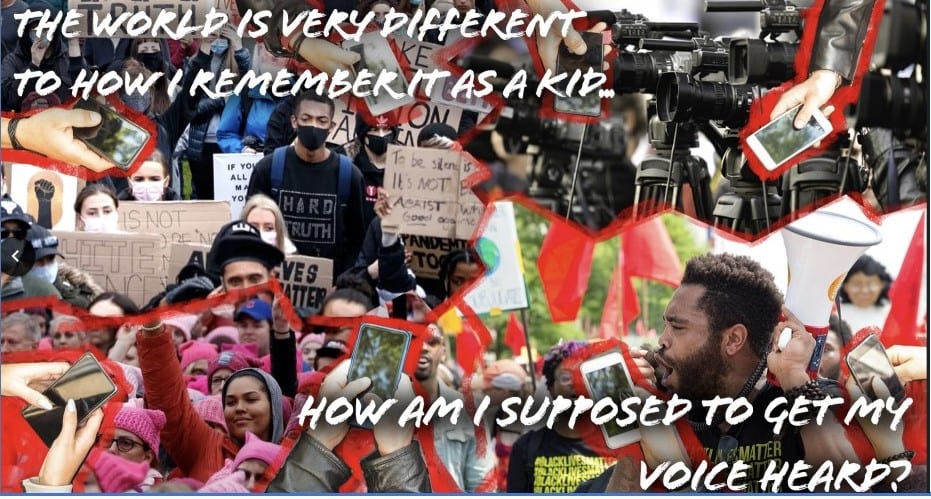
How can you use your unique perspective to tell a story? We want our students to learn that they are truly unique and have stories that only they can tell that other people want to hear or could relate to or learn from. In this activity, students watch two Pixar-in-a-Box videos on Khan Academy to learn about storytelling and perspective. Then, they identify an interesting or poignant memory and design a social media post.
3. Create an image using a line to chart an emotional journey
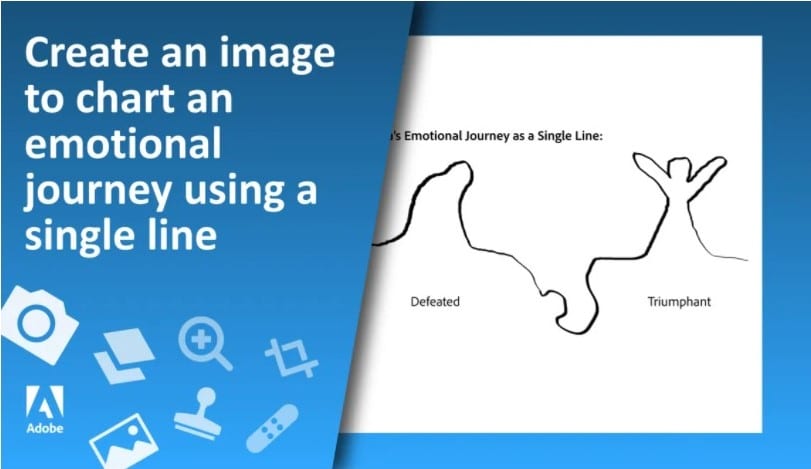
How do you show emotion using a single line? In this activity, students watch a Pixar in a Box video on Khan Academy to learn about how lines communicate character, emotion, and tension. Then they experiment with these aspects as they write their story. We love using this for pre-writing and to help students explore their story arc. Also, for students who love to draw or learn visually, this can help them get started telling their story and show them that there are many different ways to tell a story.
4. Tell the story behind your name

Sharing the story behind our name is a way to tell a story about ourselves, our culture, and our family history. And if there isn’t a story behind it, we can talk about how we feel about it and describe what it sounds like. In this activity, students use video to introduce themselves to their classmates by discussing the origin of their name. This project asks students to connect their names (and identities) to their personal and familial histories and to larger historical forces. If you’re looking for a mentor text that pairs well with this one, try “My Name” by Sandra Cisneros .
5. Develop a visual character sketch
Give students the time to create a character sketch of themselves. This will help them see how they fit into their story. In this lesson, students create a visual character sketch. They’ll treat themselves like a character and learn to see themselves objectively.
6. Create a webpage to outline the story of your movie

Building a story spine is a great way to show students how to put the parts of their story in an order that makes sense. It’s an exercise in making choices about structure. We like this activity because it gives students a chance to see different examples of structure in storytelling. Then, they consider the question: how can you use structure to set your story up for success? Finally, they design and illustrate an outline for their story.
7. Respond to a variety of writing prompts
Sometimes our students get stuck because they aren’t inspired or need a different entry point into telling their story. Give them a lot of writing prompts that they can choose from. Pass out paper and pencils. Set a timer for fifteen minutes. Then, write 3-4 writing prompts on the board. Encourage students to free-write and not worry about whether their ideas are good or right. Some of our favorite prompts to encourage students to tell their story are:
- I don’t know why I remember…
- What’s your favorite place and why?
- What objects tell the story of your life?
- What might surprise someone to learn about you?
8. Create a self-portrait exploring identity and self-expression
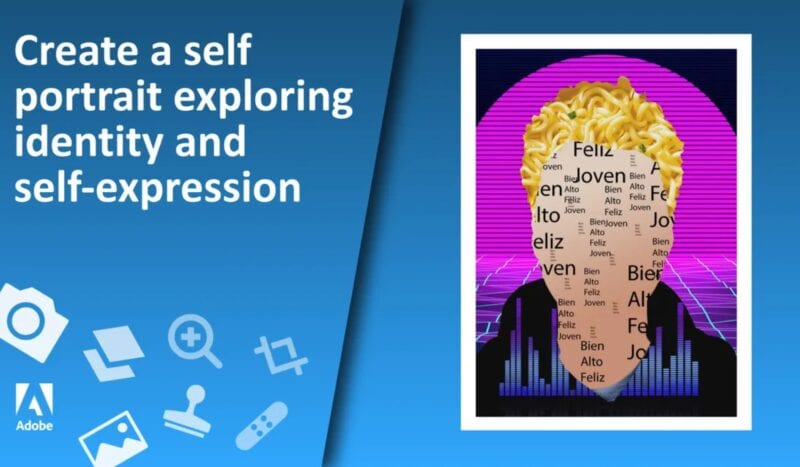
Part of what makes writing your own story so difficult for students is that they are just building their identity. In this activity, students explore how they and others define their identity. What role does identity play in determining how they are perceived and treated by others? What remains hidden and what is shown publicly?
9. Film a video to share an important story from your life

Encourage students to think about how to tell the story of a day they faced their fears. Students consider the question: How can you use different shot types to tell your story? They watch a video from Pixar in a Box on Khan Academy to learn about different camera shots and their use in storytelling. Then, they use Adobe Spark Post or Photoshop and choose three moments from their story to make into shots. We love using this to help students think about pace and perspective. Sometimes what we leave out of our story is just as important as what we include.
10. Try wild writing
Laurie Powers created a process where you read a poem and then select two lines from it. Students start their own writing with one of those lines. Anytime that they get stuck, they repeat their jump-off line again. This is a standalone activity or a daily writing warm-up, and it works with any poem. We love how it lowers the stakes. Can’t think of anything to write? Repeat the jump-off line and start again. Here are some of our favorite jump-off lines:
- The truth is…
- Some people say…
- Here’s what I forgot to tell you…
- Some questions have no answers…
- Here’s what I’m afraid to write about…
You Might Also Like
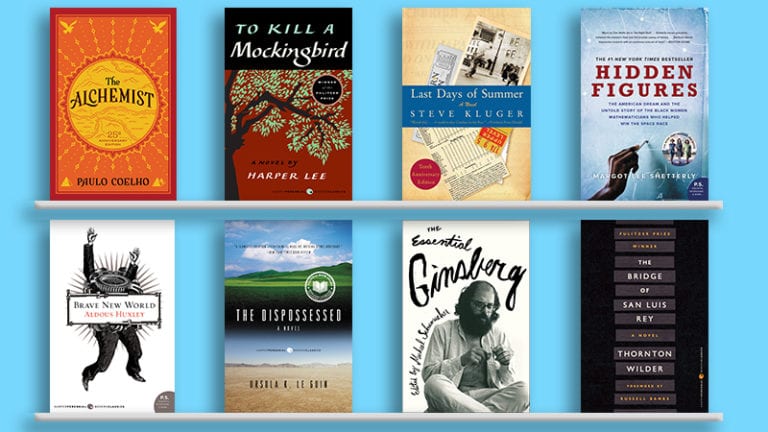
Take High School Literature to the Next Level With These Discussion and Writing Activities
Plus get access to over 100 free teaching guides. Continue Reading
Copyright © 2023. All rights reserved. 5335 Gate Parkway, Jacksonville, FL 32256
Poetry Center

Five Creative Writing Lesson Plans for Middle & High School Students
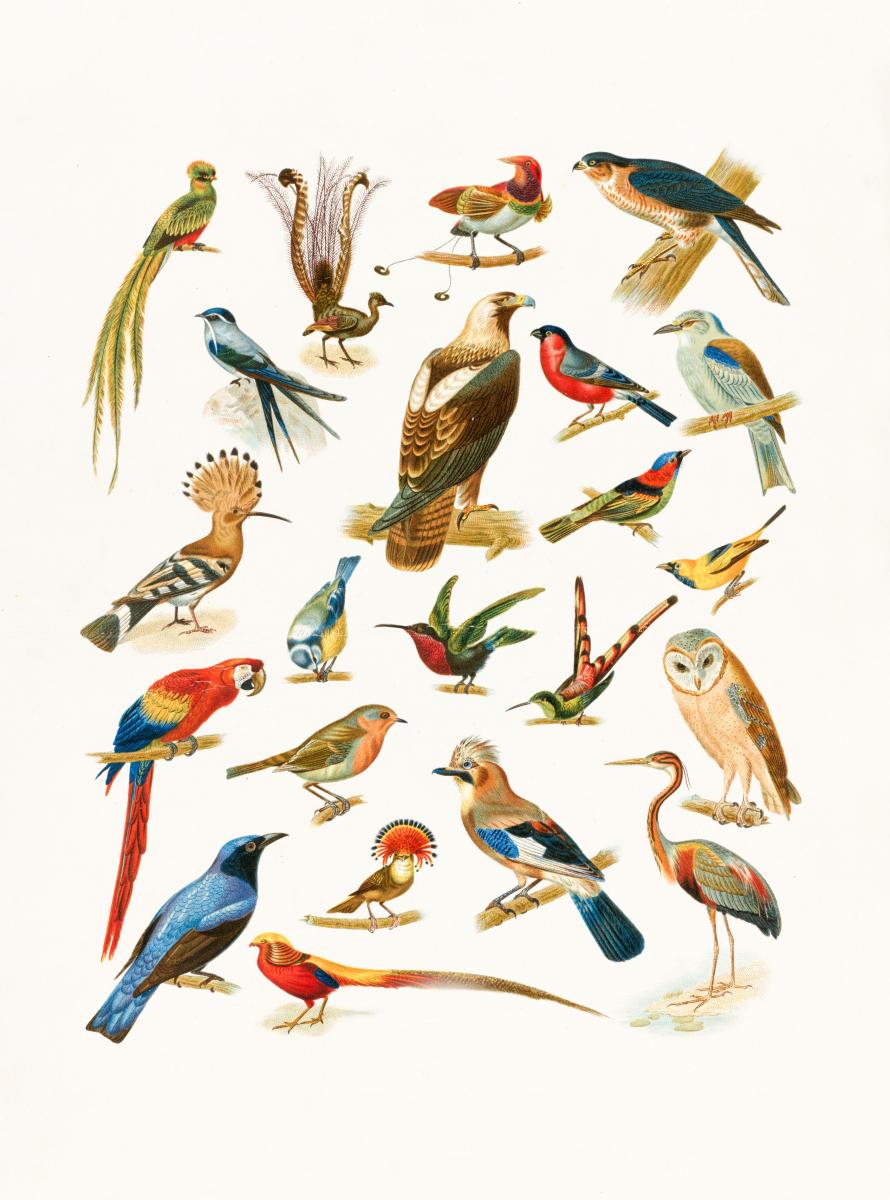
A Poem About Joy:
In this lesson plan, inspired by Ross Gay's "Sorrow Is Not My Name," Teré Fowler-Chapman asks young poets to come up with a list of things that bring them joy and then write a poem inspired by one of the items on that list. The writing exercise, which is a fantastic way to bring social-emotional learning into the classroom, is preceded by a conversation on Gay's poetics and on how joy can exist even in times of sorrow.
Personal Migrations:
Saraiya Kanning, inspired by Wang Ping's "Things We Carry on the Sea," asks young writers to, "contemplate how migration has played out in their own lives, including the lives of their families." This multi-part lesson plan includes a word association game, a discussion of Ping's poem, and a group poem in which students answer the question, "What sort of things have been carried across land, sea, or even across time?" collaboratively. After this, they write their own individual poems, using a series of questions to jump start their creativity, and then craft art pieces using popsicle sticks, pipe cleaners and/or puff paint to trace paths across the surface of their chosen canvas (Kanning used cake board!). This lesson can be shortened or spread out over class periods as part of a unit on immigration and migration.
Rare Bird Erasure:
"Erasure poems use words from another source to create a new poem," Saraiya Kanning writes in this lesson plan, which uses the field guide Rare and Elusive Birds of North America as a source text from which young writers create their own pieces (although you're welcome to use any book you'd like!). Each student receives a photocopied page from the book and goes on a "treasure hunt," selecting 5-10 words that in some way connect to one another. After creating their erasure poem, students can decorate the page with art materials to "create images, patterns, or designs around the words." This lesson plan includes a note on modifications for student with visual impairments.
Titles: Art on their Own:
So often in creative writing, the titling process is overlooked but important: as Sophie Daws says, "Writing a title can feel like putting the cherry on top of your great poem or it can feel like walking on eggshells, where the wrong title could ruin the whole poem and you just can’t come up with the right one!" This lesson plan, drawn from her high school zine residency, uses six prompts to offer a guided approach to coming up with a title for a finished project, from one that asks students to write down their favorite line to another that encourages them to think of how a title can add another tone or angle to their work.
Found Art Handmade Books:
Taylor Johnson bridges creative writing and visual art in this lesson plan, which focuses on crafting handmade books from recycled materials. Johnson suggests using everything from old postcards to yarn to insect wings to create a publication that's truly one of a kind. As far as words go, students can either add something they've previously written to their books whole cloth or cut up bits of their old writing and "remix" it. After the books are done, Johnson suggests creating a classroom library or exhibit for students to browse one another's books.
Image from the Boston Public Library.
Category:
Tags: .
- writing the community
- Skip to primary navigation
- Skip to main content
- Skip to primary sidebar
Teaching Expertise
- Classroom Ideas
- Teacher’s Life
- Deals & Shopping
- Privacy Policy
20 Creative Writing Activities For Middle School: Poem Ideas, Prompts, Story Starters, And Worksheets
April 10, 2024 // by Stephanie Ledford
Some students are prolific writers, needing no help putting pen to paper and telling their stories. However, there are other students who need a little more direction in order to get their stories out. Whatever the case may be, these 20 creative writing activities for middle school will have all of your students showing their creative prowess.
1. I Am From
After reading the poem “Where I’m From” by George Ella Lyon, have students write their own “I Am From” poems. Using a template, all students will be able to create wonderful poems illustrating their own unique backgrounds.
Learn More: Made by Teachers
2. Found Poems
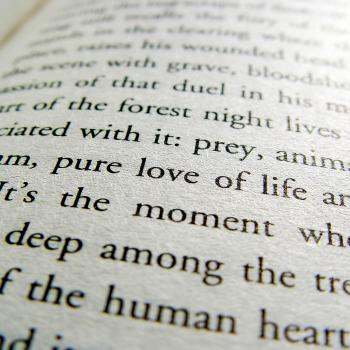
Using the words of others, students create their own “found poems.” By taking a snippet here and a line there, they can arrange them in their own creative ways to create new, interesting poems. Reading a book as a class? Have them use the book to create a found poem!
Learn More: Read, Write, Think
Your middle schoolers are sure to feel like poets in the making with this creative assignment. Encourage them to connect themselves to something bigger, like their families, their culture, or their historical background as you task them with creating poems using their own names. Prompt them to begin their writing process by having them use the letters of their names to inspire a new line of poetry that they think reflects who they are as a person.
Learn More: Mama Smiles
4. Chain Stories
This assignment has each student start with a blank piece of paper. After giving them a writing prompt , every student begins writing a story. After your chosen time limit is up, they stop writing and pass their story to the next person in their group who then has to continue telling the story. When each story returns to its original author, the activity is complete.
Learn More: Creativities ESL
5. Visual Character Sketch
Being able to add depth to a character can be difficult for many students. By allowing a student to create a visual sketch, you are allowing them a different approach to writing a character description.
Learn More: Adobe Education Exchange
6. What If…
“What if” writing prompts are a great way to get your learners’ creative juices flowing. By posing a question, they’re given a starting point, and it’s up to them to decide what twists and turns their stories will take. Will they write a sad, action-packed, or scary story? The possibilities are endless!
Learn More: Journal Buddies
7. Descriptive Writing Prompts

Descriptive writing activities are another way for middle school students to practice their creative writing skills. They can give their descriptions their own unique twists by using their different writing styles to describe common objects. And hey, they might have a different appreciation for the things in their everyday worlds after this assignment!
Learn More: Academic Writing Success
8. Scary Stories

Go through the entire writing process and teach your students how to write scary stories! Before you begin writing, though, read them some (age-appropriate) scary stories to give them the chills and an idea of what is expected in a scary story.
Learn More: Keep ’em Thinking
9. Daily Journal Writing
There is no better way to improve students’ writing abilities than to do daily writing. Each day, give students a different prompt and allow them to write for fifteen minutes. After, allow them the opportunity to share their story with their peers or the class.
Learn More: Daily Teaching Tools
10. So Much Depends Upon…
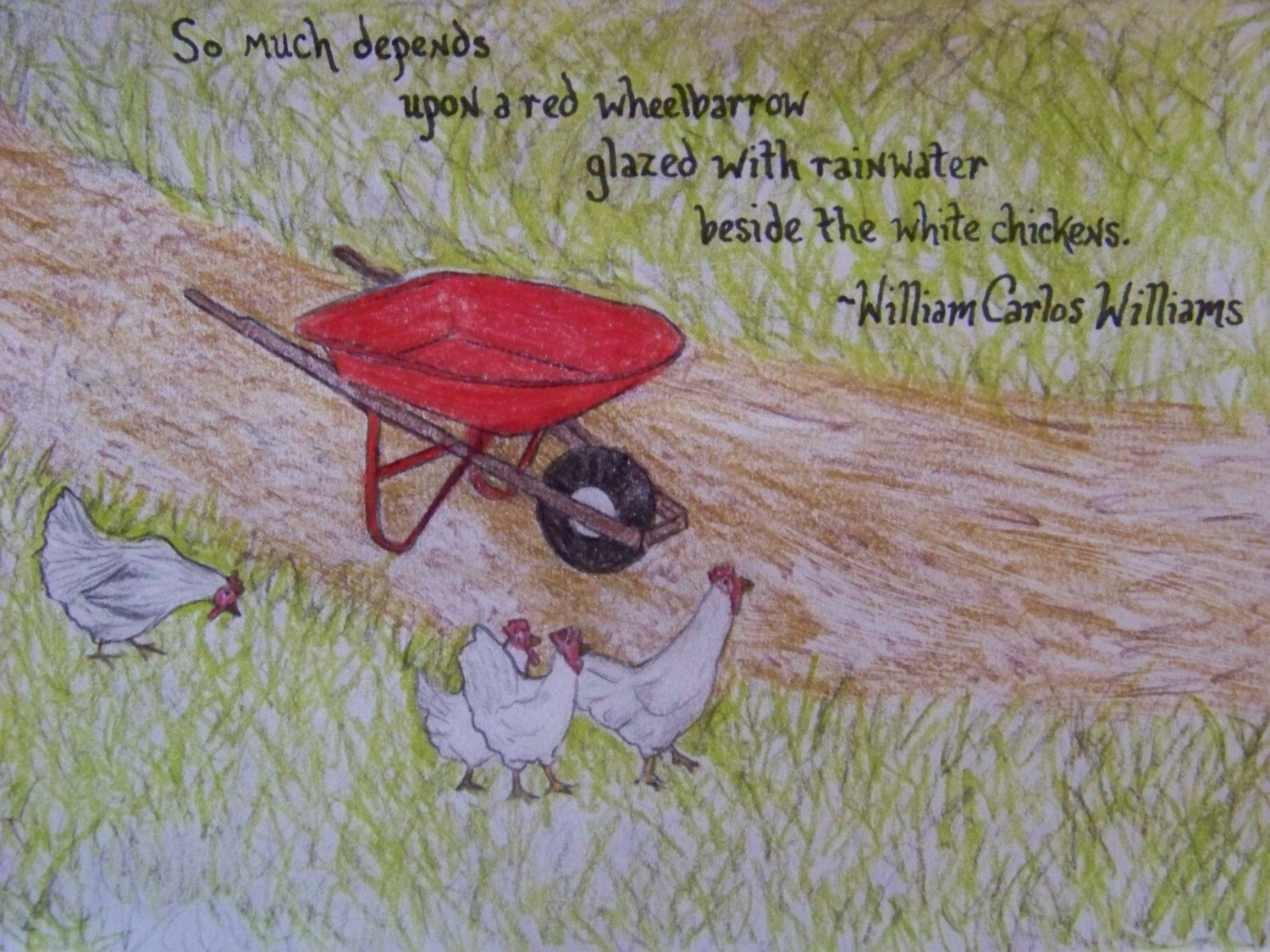
“ The Red Wheel Barrow “–such a simple yet eloquent poem. Following this lesson plan, your students will be able to write their own simple yet eloquent poems and feel like accomplished writers.
Learn More: NYLearns
11. An Ode to…
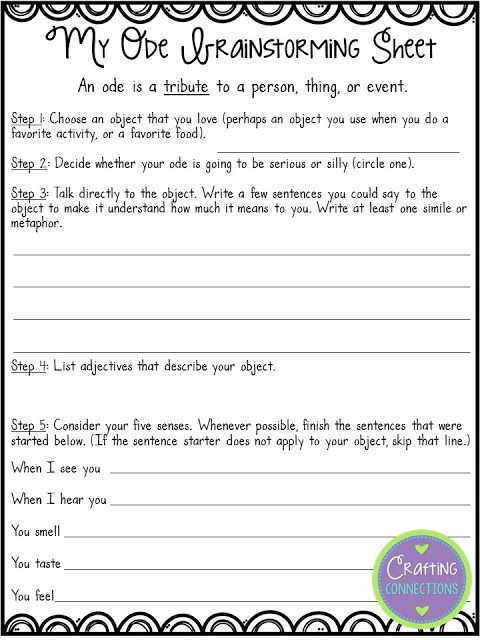
Reluctant writers are often intimidated by complicated writing ideas. By using a template like the one pictured above, your students will all be able to feel like poets as they create their own odes about a person, place, or thing.
Learn More: Crafting Connections
12. Story Starters
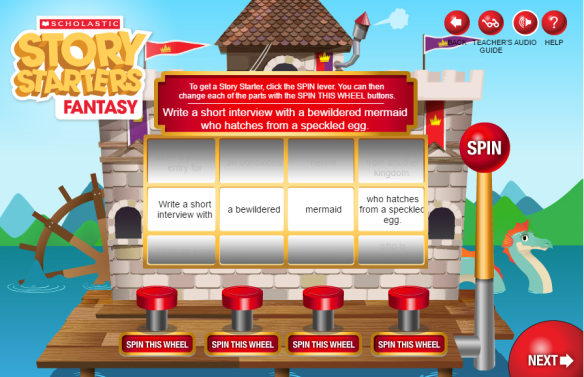
Story starters are a great way to help students begin their stories. If you have a digital classroom, the Scholastic story starter page is great because it can formulate much different writing prompts, helping engage all students.
Learn More: Scholastic
13. My Time Machine Trip
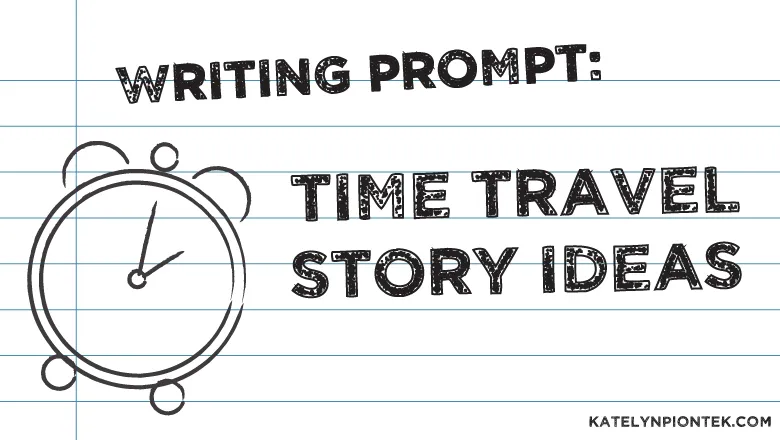
What is everyday life like in 1902? How about in 2122? Have students write stories about their experiences traveling through time using the attached worksheet. For those that need a little extra help, allow them to research time periods so they have an idea of what life was like then.
Learn More: K12 Reader
14. Writing and Math

This is a great assignment for a math class! Using the provided instructions, students are to write a story that explains to their boss the math they used while delivering packages. Since this assignment asks them to cover specific math concepts, make sure you cover them in class first (or hand this assignment to a math teacher and let them have at it!).
Learn More: Dr. Hamblin
15. How to Bake Cookies for Santa
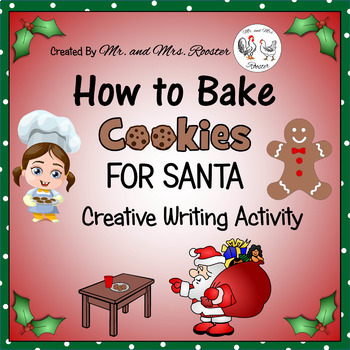
Seasonal writing activities are a great way to get kids excited around the holidays! One way to get descriptive paragraphs out of your students is through these instructions on how to bake cookies for Santa. The great thing about this assignment is all levels of writers can participate. Those that are more advanced can provide more details and struggling writers can still feel accomplished by explaining the cookie-making process!
Learn More: Teachers Pay Teachers
16. Diary Entry of a Literary Character
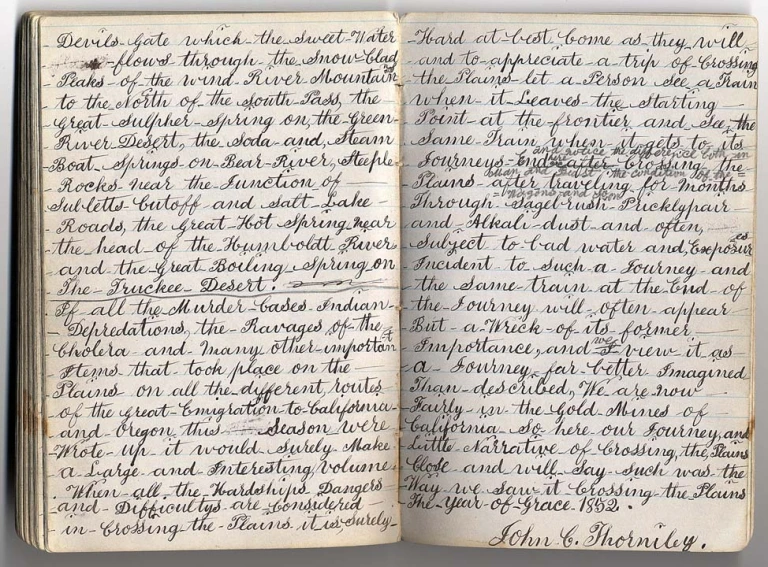
Another favorite among creative writing ideas is having students write diary entries in the voice of a character from literature. This can be a character from a book you read as a class or from a book they read on their own. Either way, it will showcase their creative writing skills and their knowledge of the character!
Learn More: Banana Magic
17. Write a Rant
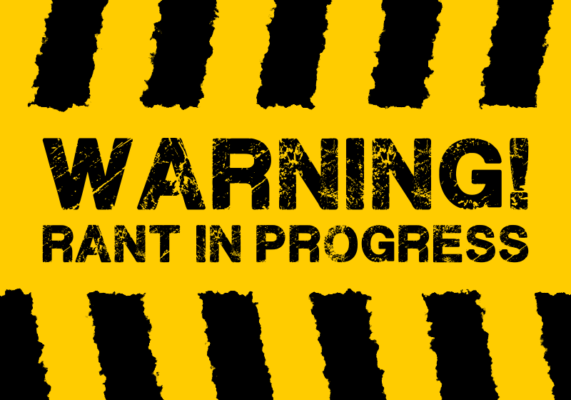
Writing a rant is a good assignment to use when you are trying to teach about the different voices we use when writing. When writing a rant, you are going to use an angrier, more aggressive voice than if you were writing a children’s story. This is a great warm-up to get students ready to write persuasive essays.
Learn More: Teachers and Writers Magazine
18. Write a Newspaper Story
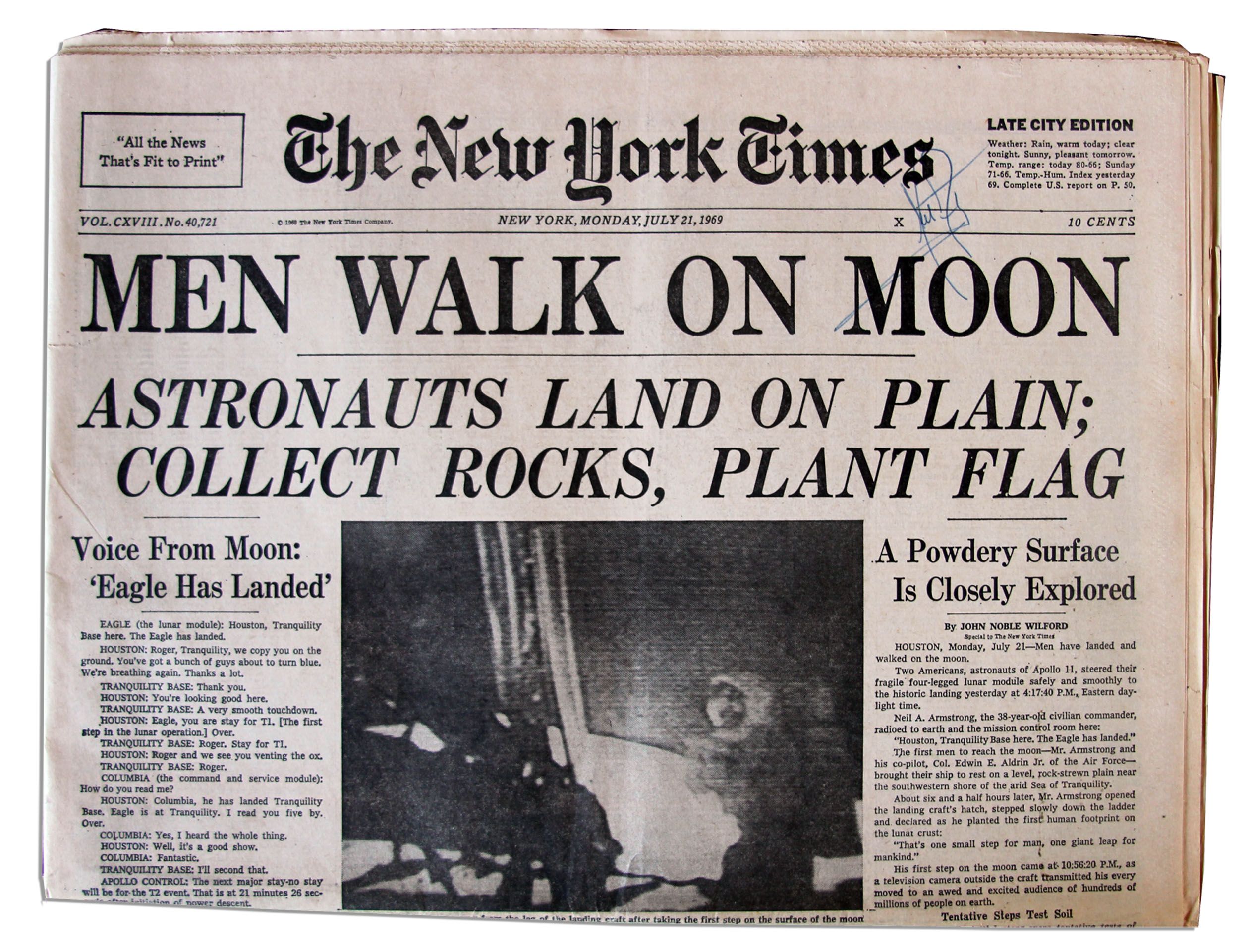
After reading through some newspapers to get ideas on how newspaper articles are formatted, have each of your students write their own article. When they are all done, you can compile a classroom newspaper!
Learn More: Nie Online
19. Coat of Arms
Studying Shakespeare? Maybe European countries where it was common to have a Coat of Arms? If so, this assignment is perfect for your class. Have students create a coat of arms and then write a few paragraphs explaining their choices.
20. A Letter to Yourself

Have students write letters to their future selves. Give them specific questions to answer like “where do you see yourself in five years? Are you happy with your life? Is there anything you would change?” And then in five years, mail the letters to their parents!
Learn More: Ms. Carota
- Try for free
Creative Writing Lesson Plans
- Most Popular
- Most Recent

- Share full article
Advertisement
Supported by

Our 2020-21 Writing Curriculum for Middle and High School
A flexible, seven-unit program based on the real-world writing found in newspapers, from editorials and reviews to personal narratives and informational essays.

Update, Aug. 3, 2023: Find our 2023-24 writing curriculum here.
Our 2019-20 Writing Curriculum is one of the most popular new features we’ve ever run on this site, so, of course, we’re back with a 2020-21 version — one we hope is useful whether you’re teaching in person , online , indoors , outdoors , in a pod , as a homeschool , or in some hybrid of a few of these.
The curriculum detailed below is both a road map for teachers and an invitation to students. For teachers, it includes our writing prompts, mentor texts, contests and lesson plans, and organizes them all into seven distinct units. Each focuses on a different genre of writing that you can find not just in The Times but also in all kinds of real-world sources both in print and online.
But for students, our main goal is to show young people they have something valuable to say, and to give those voices a global audience. That’s always been a pillar of our site, but this year it is even more critical. The events of 2020 will define this generation, and many are living through them isolated from their ordinary communities, rituals and supports. Though a writing curriculum can hardly make up for that, we hope that it can at least offer teenagers a creative outlet for making sense of their experiences, and an enthusiastic audience for the results. Through the opportunities for publication woven throughout each unit, we want to encourage students to go beyond simply being media consumers to become creators and contributors themselves.
So have a look, and see if you can find a way to include any of these opportunities in your curriculum this year, whether to help students document their lives, tell stories, express opinions, investigate ideas, or analyze culture. We can’t wait to hear what your students have to say!
Each unit includes:
Writing prompts to help students try out related skills in a “low stakes” way.
We publish two writing prompts every school day, and we also have thematic collections of more than 1,000 prompts published in the past. Your students might consider responding to these prompts on our site and using our public forums as a kind of “rehearsal space” for practicing voice and technique.
Daily opportunities to practice writing for an authentic audience.
If a student submits a comment on our site, it will be read by Times editors, who approve each one before it gets published. Submitting a comment also gives students an audience of fellow teenagers from around the world who might read and respond to their work. Each week, we call out our favorite comments and honor dozens of students by name in our Thursday “ Current Events Conversation ” feature.
Guided practice with mentor texts .
Each unit we publish features guided practice lessons, written directly to students, that help them observe, understand and practice the kinds of “craft moves” that make different genres of writing sing. From how to “show not tell” in narratives to how to express critical opinions , quote or paraphrase experts or craft scripts for podcasts , we have used the work of both Times journalists and the teenage winners of our contests to show students techniques they can emulate.
“Annotated by the Author” commentaries from Times writers — and teenagers.
As part of our Mentor Texts series , we’ve been asking Times journalists from desks across the newsroom to annotate their articles to let students in on their writing, research and editing processes, and we’ll be adding more for each unit this year. Whether it’s Science writer Nicholas St. Fleur on tiny tyrannosaurs , Opinion writer Aisha Harris on the cultural canon , or The Times’s comics-industry reporter, George Gene Gustines, on comic books that celebrate pride , the idea is to demystify journalism for teenagers. This year, we’ll be inviting student winners of our contests to annotate their work as well.
A contest that can act as a culminating project .
Over the years we’ve heard from many teachers that our contests serve as final projects in their classes, and this curriculum came about in large part because we want to help teachers “plan backwards” to support those projects.
All contest entries are considered by experts, whether Times journalists, outside educators from partner organizations, or professional practitioners in a related field. Winning means being published on our site, and, perhaps, in the print edition of The New York Times.
Webinars and our new professional learning community (P.L.C.).
For each of the seven units in this curriculum, we host a webinar featuring Learning Network editors as well as teachers who use The Times in their classrooms. Our webinars introduce participants to our many resources and provide practical how-to’s on how to use our prompts, mentor texts and contests in the classroom.
New for this school year, we also invite teachers to join our P.L.C. on teaching writing with The Times , where educators can share resources, strategies and inspiration about teaching with these units.
Below are the seven units we will offer in the 2020-21 school year.
September-October
Unit 1: Documenting Teenage Lives in Extraordinary Times
This special unit acknowledges both the tumultuous events of 2020 and their outsized impact on young people — and invites teenagers to respond creatively. How can they add their voices to our understanding of what this historic year will mean for their generation?
Culminating in our Coming of Age in 2020 contest, the unit helps teenagers document and respond to what it’s been like to live through what one Times article describes as “a year of tragedy, of catastrophe, of upheaval, a year that has inflicted one blow after another, a year that has filled the morgues, emptied the schools, shuttered the workplaces, swelled the unemployment lines and polarized the electorate.”
A series of writing prompts, mentor texts and a step-by-step guide will help them think deeply and analytically about who they are, how this year has impacted them, what they’d like to express as a result, and how they’d like to express it. How might they tell their unique stories in ways that feel meaningful and authentic, whether those stories are serious or funny, big or small, raw or polished?
Though the contest accepts work across genres — via words and images, video and audio — all students will also craft written artist’s statements for each piece they submit. In addition, no matter what genre of work students send in, the unit will use writing as a tool throughout to help students brainstorm, compose and edit. And, of course, this work, whether students send it to us or not, is valuable far beyond the classroom: Historians, archivists and museums recommend that we all document our experiences this year, if only for ourselves.
October-November
Unit 2: The Personal Narrative
While The Times is known for its award-winning journalism, the paper also has a robust tradition of publishing personal essays on topics like love , family , life on campus and navigating anxiety . And on our site, our daily writing prompts have long invited students to tell us their stories, too. Our 2019 collection of 550 Prompts for Narrative and Personal Writing is a good place to start, though we add more every week during the school year.
In this unit we draw on many of these resources, plus some of the 1,000-plus personal essays from the Magazine’s long-running Lives column , to help students find their own “short, memorable stories ” and tell them well. Our related mentor-text lessons can help them practice skills like writing with voice , using details to show rather than tell , structuring a narrative arc , dropping the reader into a scene and more. This year, we’ll also be including mentor text guided lessons that use the work of the 2019 student winners.
As a final project, we invite students to send finished stories to our Second Annual Personal Narrative Writing Contest .
DECEMBER-January
Unit 3: The Review
Book reports and literary essays have long been staples of language arts classrooms, but this unit encourages students to learn how to critique art in other genres as well. As we point out, a cultural review is, of course, a form of argumentative essay. Your class might be writing about Lizzo or “ Looking for Alaska ,” but they still have to make claims and support them with evidence. And, just as they must in a literature essay, they have to read (or watch, or listen to) a work closely; analyze it and understand its context; and explain what is meaningful and interesting about it.
In our Mentor Texts series , we feature the work of Times movie , restaurant , book and music critics to help students understand the elements of a successful review. In each one of these guided lessons, we also spotlight the work of teenage contest winners from previous years.
As a culminating project, we invite students to send us their own reviews of a book, movie, restaurant, album, theatrical production, video game, dance performance, TV show, art exhibition or any other kind of work The Times critiques.
January-February
Unit 4: Informational Writing
Informational writing is the style of writing that dominates The New York Times as well as any other traditional newspaper you might read, and in this unit we hope to show students that it can be every bit as engaging and compelling to read and to write as other genres. Via thousands of articles a month — from front-page reporting on politics to news about athletes in Sports, deep data dives in The Upshot, recipes in Cooking, advice columns in Style and long-form investigative pieces in the magazine — Times journalists find ways to experiment with the genre to intrigue and inform their audiences.
This unit invites students to take any STEM-related discovery, process or idea that interests them and write about it in a way that makes it understandable and engaging for a general audience — but all the skills we teach along the way can work for any kind of informational writing. Via our Mentor Texts series, we show them how to hook the reader from the start , use quotes and research , explain why a topic matters and more. This year we’ll be using the work of the 2020 student winners for additional mentor text lessons.
At the end of the unit, we invite teenagers to submit their own writing to our Second Annual STEM writing contest to show us what they’ve learned.
March-April
Unit 5: Argumentative Writing
The demand for evidence-based argumentative writing is now woven into school assignments across the curriculum and grade levels, and you couldn’t ask for better real-world examples than what you can find in The Times Opinion section .
This unit will, like our others, be supported with writing prompts, mentor-text lesson plans, webinars and more. We’ll also focus on the winning teenage writing we’ve received over the six years we’ve run our related contest.
At a time when media literacy is more important than ever, we also hope that our annual Student Editorial Contest can serve as a final project that encourages students to broaden their information diets with a range of reliable sources, and learn from a variety of perspectives on their chosen issue.
To help students working from home, we also have an Argumentative Unit for Students Doing Remote Learning .
Unit 6: Writing for Podcasts
Most of our writing units so far have all asked for essays of one kind or another, but this spring contest invites students to do what journalists at The Times do every day: make multimedia to tell a story, investigate an issue or communicate a concept.
Our annual podcast contest gives students the freedom to talk about anything they want in any form they like. In the past we’ve had winners who’ve done personal narratives, local travelogues, opinion pieces, interviews with community members, local investigative journalism and descriptions of scientific discoveries.
As with all our other units, we have supported this contest with great examples from The Times and around the web, as well as with mentor texts by teenagers that offer guided practice in understanding elements and techniques.
June-August
Unit 7: Independent Reading and Writing
At a time when teachers are looking for ways to offer students more “voice and choice,” this unit, based on our annual summer contest, offers both.
Every year since 2010 we have invited teenagers around the world to add The New York Times to their summer reading lists and, so far, 70,000 have. Every week for 10 weeks, we ask participants to choose something in The Times that has sparked their interest, then tell us why. At the end of the week, judges from the Times newsroom pick favorite responses, and we publish them on our site.
And we’ve used our Mentor Text feature to spotlight the work of past winners , explain why newsroom judges admired their thinking, and provide four steps to helping any student write better reader-responses.
Because this is our most open-ended contest — students can choose whatever they like, and react however they like — it has proved over the years to be a useful place for young writers to hone their voices, practice skills and take risks . Join us!
Save 10% today on your lessons using the code GIVEME10

Creative Writing Lesson Plans

Creative writing is an important writing style for students to learn about and experience on their journey to becoming writers. Helping students embrace their creativity is a great way to get students writing. Students enjoy writing more when they get choice over their topic and format. Read more about how I use the RAFT writing model in the blog post Student Engagement Through Choice Writing .
Creative writing can be used weekly during free choice writing time, as a stand-alone unit or left for those days when you have a substitute teacher and want to leave an engaging lesson for your students.
Check out the creative writing lessons below to help infuse excitement into your writing program.

Year-Long Creative Writing Choice Boards
This no prep – just photocopy and teach, Creative Writing Full Year Bundle will keep your students engaged in their writing. This bundle provides holiday writing prompts (Halloween, Christmas, Valentine’s Day, Easter) as well as seasonal writing prompts (Fall, Winter, Spring, Summer, Back to School) to support an inclusive classroom environment.
Students will select one of the provided seasonal or holiday-themed character roles and create a written or visual product based on the character’s specific writing prompt using the RAFT (Role, Audience, Format, Topic) format.
Find the Creative Writing Full Year Bundle on Shopify CAD or Teachers Pay Teachers USD .
Included in this Resource:
- Detailed Teacher Instructions
- 9 Different Creative Writing Assignments (with multiple background options)
- Standards-Based Grading Rubric (Level 1 – Level 4)
- Points-Based Grading Rubric (Provides a final percentage mark)
- Google Classroom-ready PDFs

Creative Writing Prompts and Activities
Get your students excited about writing with these no-prep creative writing prompts. Students will select their topic from 20 different writing prompts.
These prompts can be used as a stand-alone assignment, sub plans, or enrichment task. Integrate these prompts into your Writer’s Workshop classes or any ELA writing lesson. Find the Creative Writing Prompts and Activities on Shopify CAD or Teachers Pay Teachers USD .
Resource Includes:
- Teacher Instructions
- Student Assignment Sheet (List or Choice Board Format)
- 6 Anchor Charts
- 20 different levelled writing prompts
- 2 Rubric Options (Standards-Based Rubric or Points-Based Rubric)
Interactive Writing Prompts
These no-prep interactive writing prompts get students up and moving during English class. Students use the 9 different story prompts to get thinking creatively about what might happen in each scenario. Students must move around the classroom to answer each other’s story writing prompts. Find the Interactive Writing Prompts on Shopify CAD or Teachers Pay Teachers USD .
- 9 Different Open Ended Story Prompts
- 1 Blackline Master for students to create their own
Are you looking for more writing activities?
- Argumentative Essay Writing Unit
- My Life in Logos Paragraph Writing Assignment
- Media Literacy Review Writing 16 Lessons
- Pet Memes Narrative Writing Assignment
- Persuasive Writing Assignment Michael vs LeBron
Related Posts

This FREE persuasive writing unit is
- Perfect for engaging students in public speaking and persuasive writing
- Time and energy saving
- Ideal for in-person or online learning
By using highly-engaging rants, your students won’t even realize you’ve channeled their daily rants and complaints into high-quality, writing!

- HOW TO GET STUDENTS WRITING IN 5 MINUTES OR LESS

Writer’s Workshop Middle School: The Ultimate Guide
Feb 23, 2021
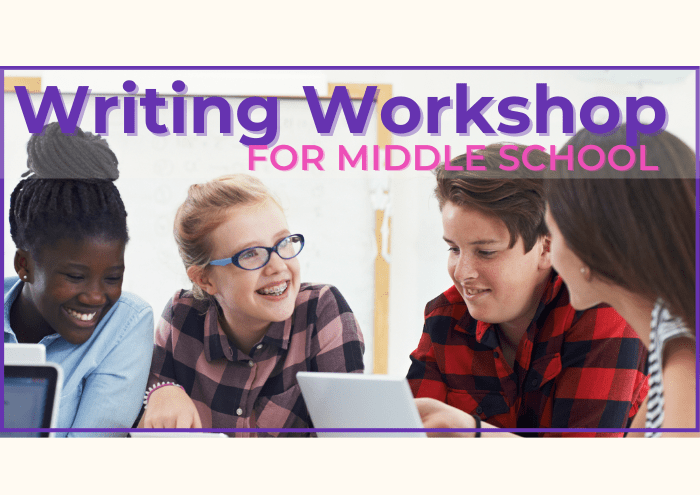
Writer’s Workshop Middle School: The Ultimate Guide defines the writer’s workshop model, its essential components, pros and cons, step-by-step set-up, and further resources.
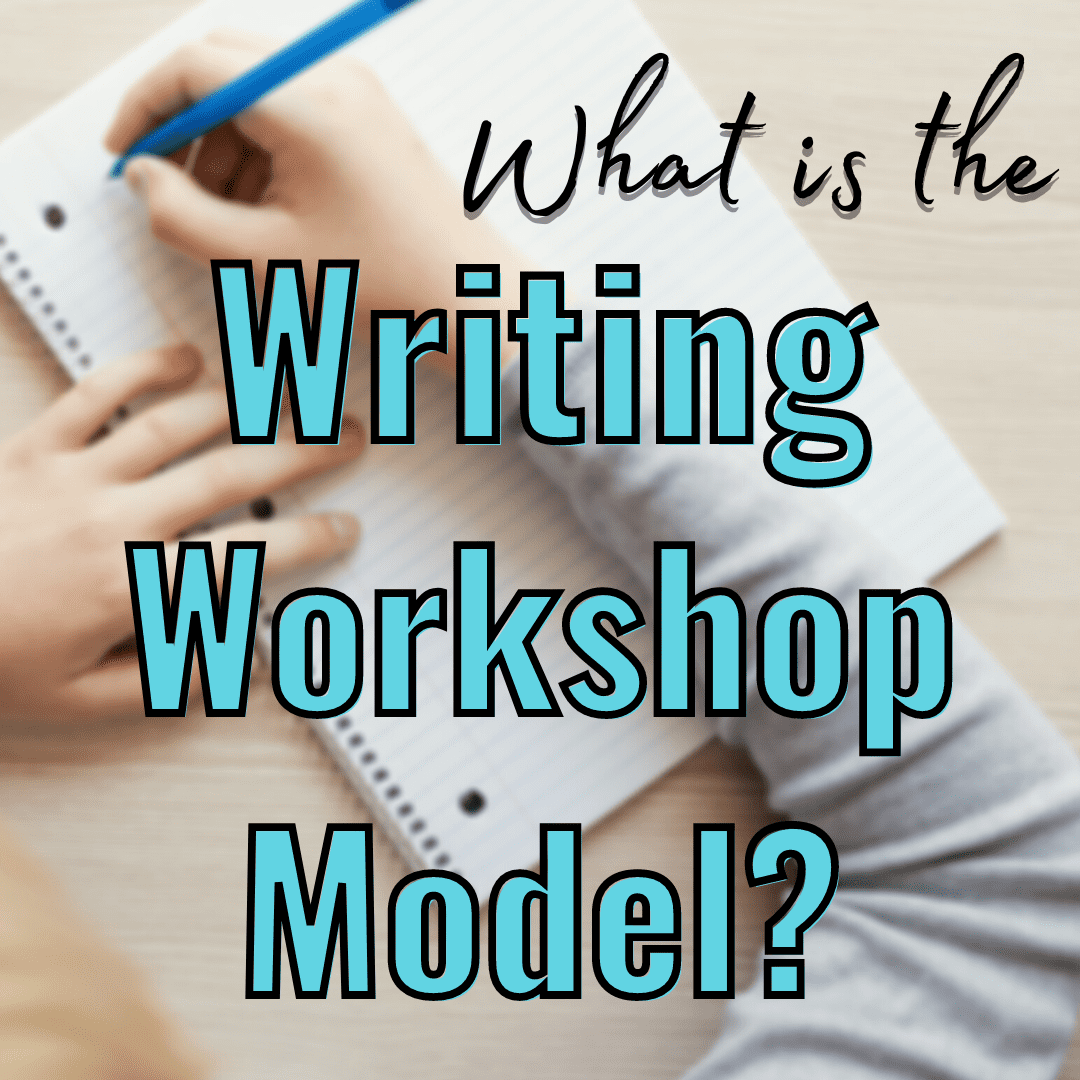
What is the writer’s workshop model?
Writer’s workshop is a method of teaching writing developed by Donald Graves and Donald Murray , amongst other teacher-researchers.
The writer’s workshop provides a student-centered environment where students are given time, choice, and voice in their learning. The teacher nurtures the class by creating and mentoring a community of writers.
So, why does the writer’s workshop in middle school matter?
Students learn more during the writer’s workshop because you can mentor them toward what they need to know and practice, and they have lots of time to write and read in order to improve at their own pace (to an extent).
For example, if the skill I need to teach is how authors use mood and tone to create meaning , then I would use a mentor text to teach that concept. However, after reading, the focus will not be on answering questions about the text in written form. Instead, I demonstrate how writers choose particular words and the arrangement of those words to create a mood and tone.
Students then try creating mood and tone with their own pieces of writing. Only after students have practiced their own creations, do I then circle back around to other literature for students to practice literary analysis of mood and tone and its effect on meaning.
Why I focus on writing in the ELA classroom?
I’ve found students are more likely to read assigned texts if I’ve given them a reason to use those texts. That reason? To apply what they learn from mentor texts to their choice writing. Middle school students love to express themselves in creative ways, and by giving students this choice, you build engagement and motivation to continue learning.
The essential components of the writer’s workshop in middle school are:
- Time to write daily
- Student choice
- Exploring the writer’s voice
- Building a community of writers
- Mentor teaching
1. Time to Write Daily
Students need a chance to write daily. Various ways you can do this are through Bell Ringers at the beginning of the class, writing during the mini-lesson, and writing projects during workshop time. My students use writing journals because they need a space to think before they face a blank computer screen.
Students do read in my classes. However, their purpose for reading is to become better writers. This reading is either assigned, student choice, or a choice between the assigned reading and student choice, depending on the skill or concept I’m targeting that week.
This is how I break up our daily writing:
- Write Now (bell ringer)
- Mini-lesson and sharing
- Writing/Reading Workshop while I confer with writers
- Short turn and talk, log off computers and pack up
Below is an example of my story writer’s workshop time transformation. This is what I use when we are writing narratives. I’m using a fantasy magic theme here:
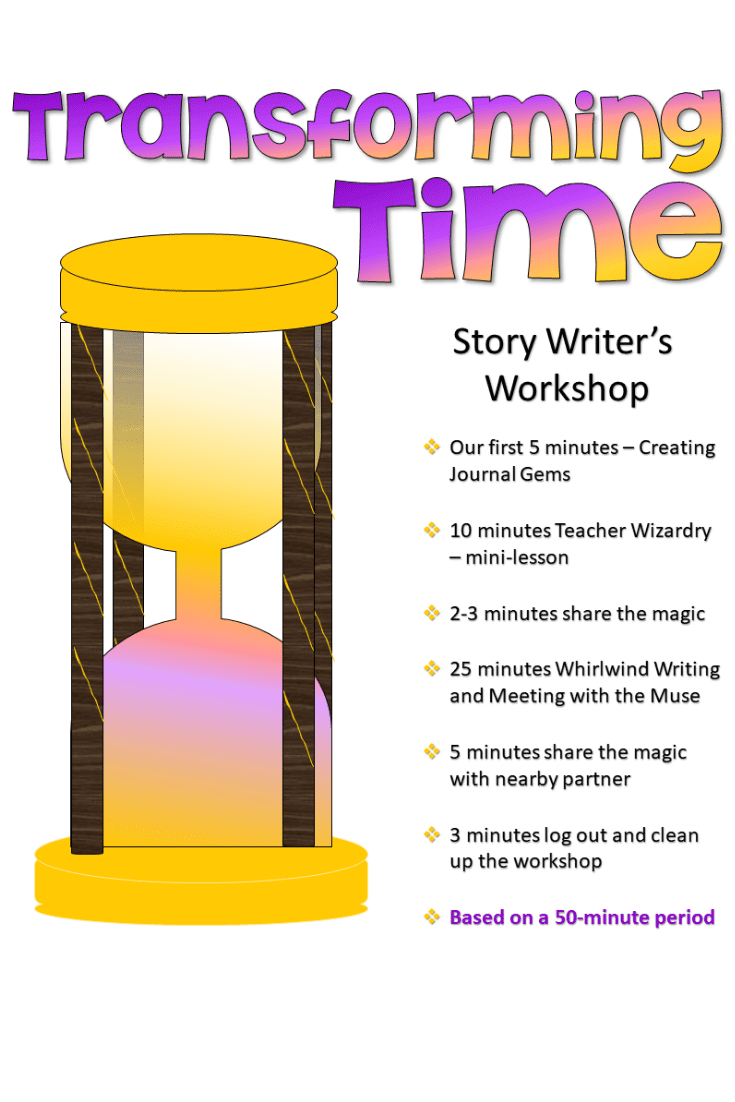
2. Student Choice
To keep students motivated to write, you want to build in student choice whenever and wherever possible. Just to clarify, you don’t have to give them choices for everything they do.
For one thing, that would be as overwhelming as shopping on the cereal aisle at your local grocery store. Just too many choices.
When I introduce a concept, I may give them a few choices on how students can practice that concept. If I give them a writing assignment, I often allow them ONE choice in topic, genre, audience, or mode of writing.
If you need students to complete an assignment/activity within a certain time period, tell them ahead of time. Let them know they can turn in an excerpt if they want to write something longer than you expect.
Of course, this is not always possible. They need to learn how to write within certain time parameters. So, let them practice this through timed writings or word sprints .
One way to help students with choice is to have them do listing activities frequently. They could even have a section in their writing notebooks just for lists of ideas.
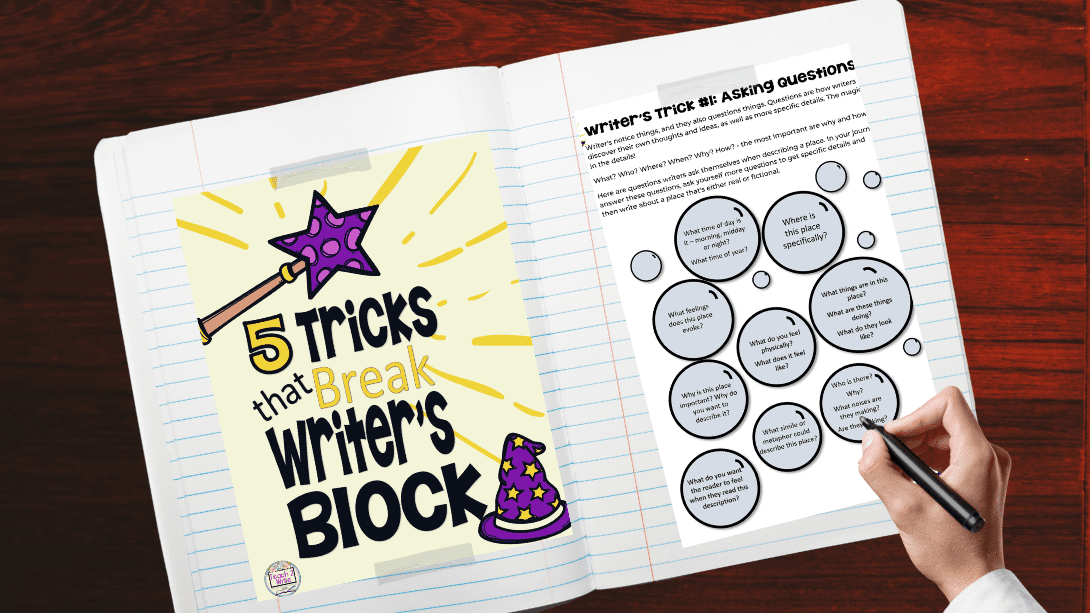
3. Exploring the writer’s voice
Writer’s voice – that elusive term that most writers have no idea how to achieve until they’ve written for a while, and then finally realize they have it. The ultimate goal for me as a writing teacher is to help my students to find their voice.
I want students to be able to explore what is important to them personally and to explore how they can share this with others. From encouraging students to participate in small group sharing to author’s celebrations, students need the opportunity to see their writing voice matters.
There are so many different ways for kids to publish safely online – Edublogs, Adobe Spark, Google Sites, FlipGrid, etc.

4. Building a community of writers in your writer’s workshop for middle school
Middle school students are very social, but even the quiet writers need to socialize often with other writers. This component of the writer’s workshop for middle school is what makes this model an actual workshop.
Students share their writing with each other. Usually, I allow for natural partnerships and groups to form. However, at the beginning of the year, I often pair up students for short activities. This helps everyone feel more comfortable with each other.
One way I build a community of writers is to play the name game at the beginning of the year. We all stand in a circle and we toss a ball to each other and say our name and all the people who have had the ball tossed to them. It gets fun when students start to forget names. They all start out being self-conscious but end up laughing and smiling.
Another way to build a community is during share time. I have students write in their notebooks as soon as they come into the classroom as a warm-up, starter activity that I call Write Nows. These Write Nows are projected up on the screen, and students write for 2-5 minutes. After this, I ask students to turn and talk to a neighbor about what they wrote.
Sometimes this writing is a review of the previous day or another activity that goes along with the skill we are learning. Other times it is a prewriting activity that helps break writer’s block .
Write a Letter to your Students
To help students get to know me as a community member, I write a letter to them and they write back to me. This starts the relationship-building between my students and me within the first week, and I conference with the students about their letters. This also gets them into the swing of a writer’s workshop.
My students love this letter-writing activity that I’ve done every year for the past 24 years. It’s a hit every year and establishes the tone and mood of our workshop.
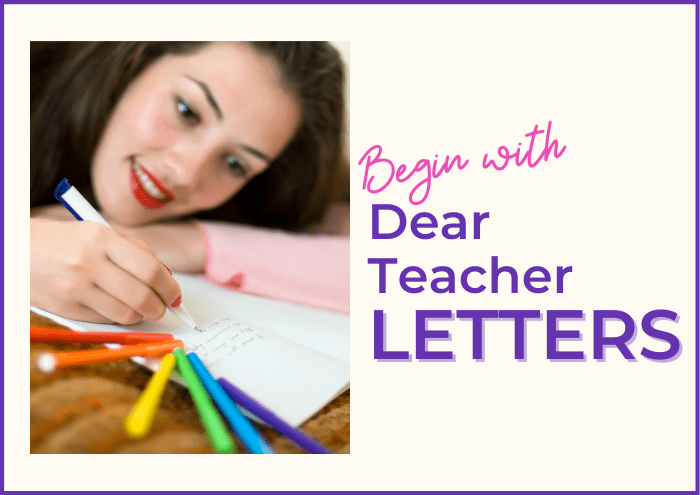
5. Teacher as Writing Mentor
One of the most important components of the writer’s workshop in middle school is you – the writing teacher.
To teach writing well, you should write along with your students. Over the years, I’ve written on transparencies, used a document camera, and filmed myself writing. All of these methods work. Generally, I write along with students during the bell-ringer activity, which I call Write Now, but sometimes I’ve prewritten the Write Now.
Additionally, I show students my various writing projects, both published and unpublished, during daily lessons.
My students have seen this blog, heard my podcasts , listened to me read aloud from stories I’ve written and/or published. My students are the ones who pushed me to publish my first YA books . You’ll be amazed at what you come up with and how this creates a bond with your students that lasts a lifetime.
Also, by completing the writing assignments you assign, you’ll be able to empathize with and anticipate the writer’s struggle with each assignment.
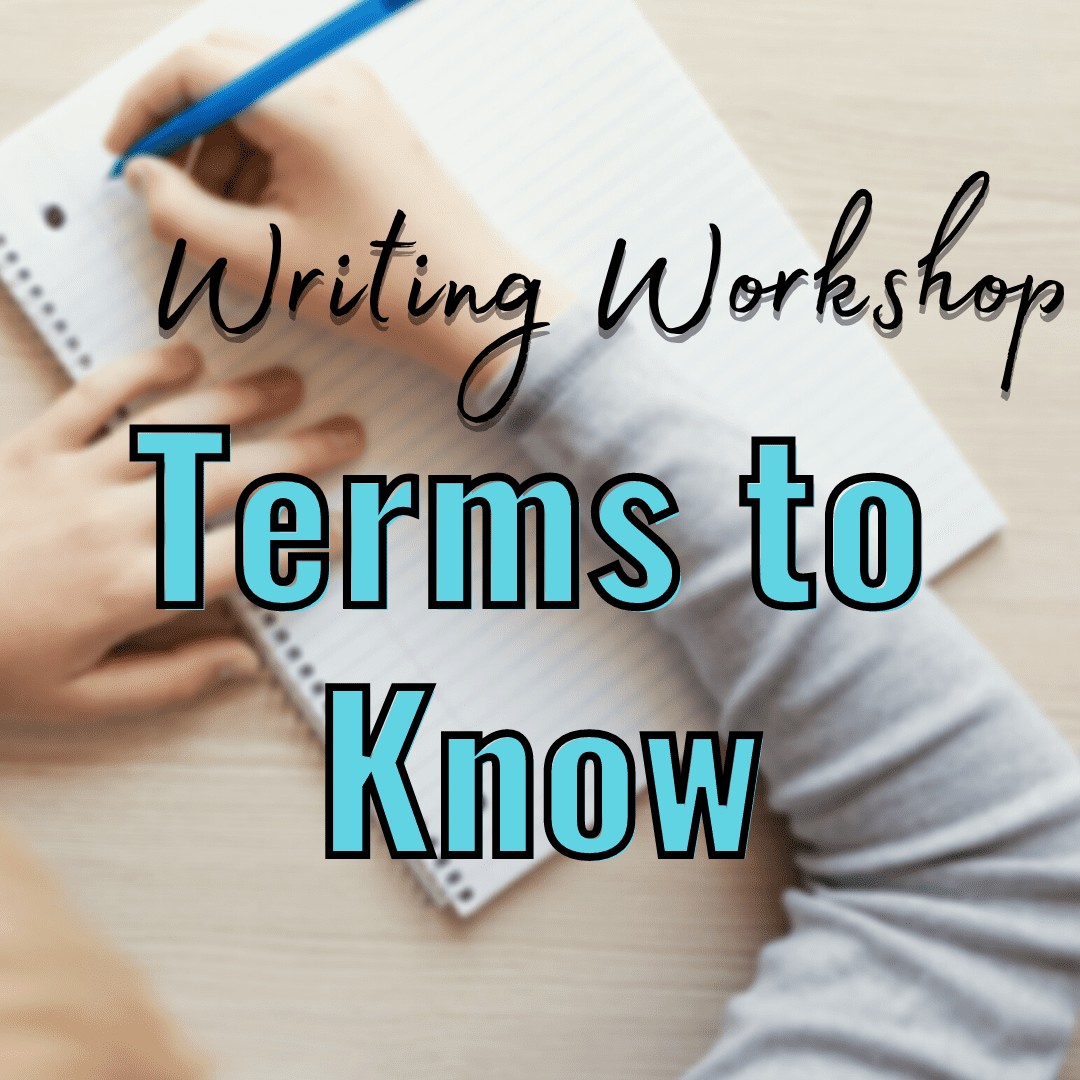
Terms to Know for Writing Workshop
This is not an exhaustive list, but one that will be added to as I find more terms that should be added here.
Activity: the practice of a skill or process, especially when gaining new knowledge
Assignment: a product created by the student after practicing a skill or process that may be revised up until a particular due date
Bell ringer: a beginning of the period activity (I call these Write Nows in my class)
Blended learning environment: in-person LIVE teaching and learning or digital learning with recorded lessons
Conference: a meeting between teacher and student about their writing
Journal write: handwriting in a journal for ideas, bell ringers, collecting information, etc.
Mini-lesson: a short 5-10 minute lesson that teaches either a whole or partial skill or process
Mastery Learning: quizzing students on their conceptual knowledge, giving them different activities based on the results of their quizzes – either reteach or extend – and quizzing again. Revisions can also be mastery-learning pieces.
Mentor texts: well-written, multicultural texts used to demonstrate a literary concept or style
Rubric: a breakdown of the skill into levels of learning – students revise to earn a higher level
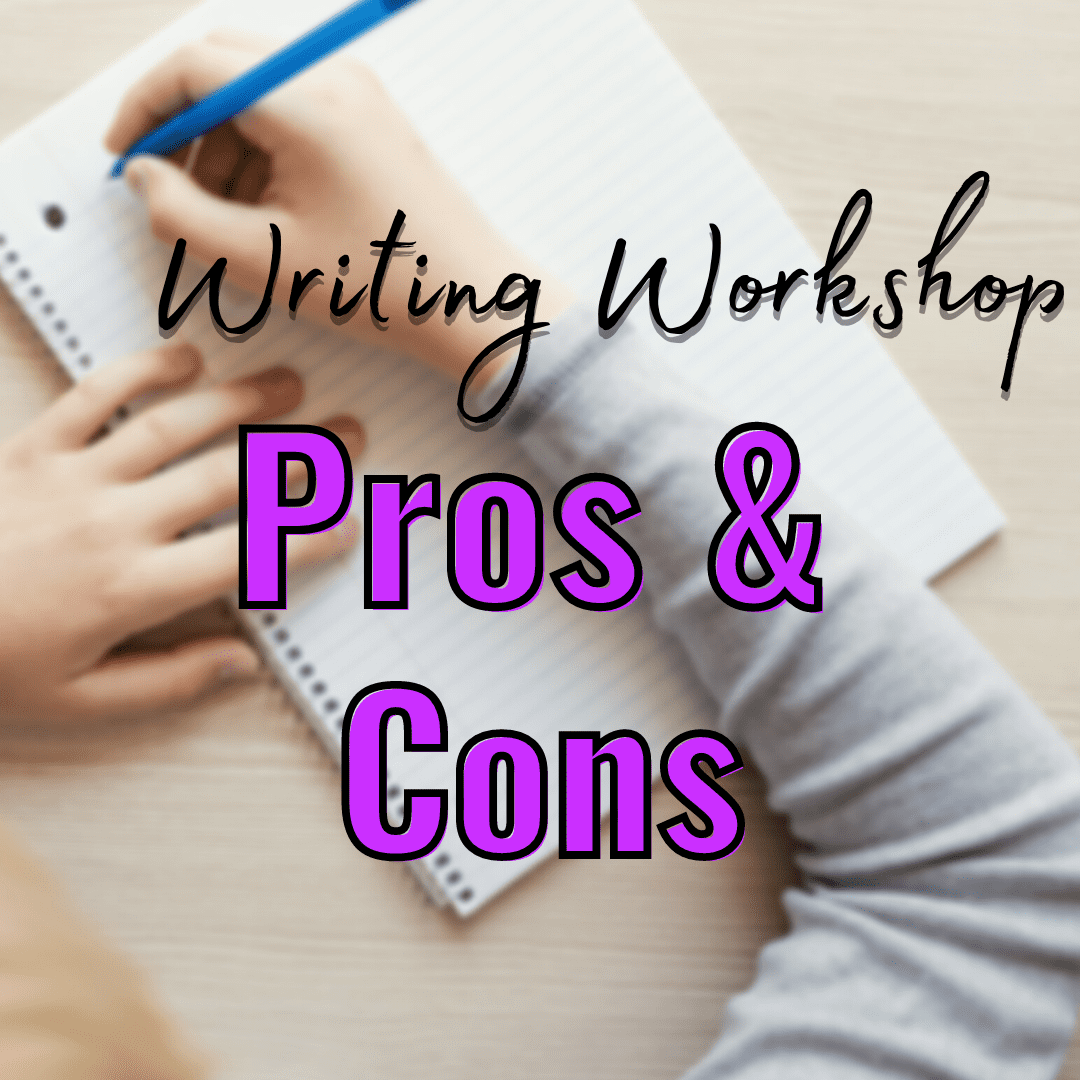
Writing Workshop Middle School Pros and Cons
- Builds student relationships with you and each other – lots of SEL
- Easier to differentiate for students than the traditional classroom model
- Grading can be accomplished during conferences
- Students are more engaged and begin to enjoy writing
- They might even enjoy reading more, too
- Mini-lessons are short, sweet and to the point, less prep time for presentations
- Breaking through writer’s block
- Teaching students how to use the technology
- Helping students revise if they don’t have access to technology
- Adapting to technology challenges that arise (switch to writing journals or change Internet browsers)
- Deadlines can be difficult to manage sometimes
As far as time management is concerned – one of the things I am going to stress to my students is the need for getting assignments turned in, even if it’s not perfect. I need to be able to keep them to deadlines. So, this year, I’m going to teach my student’s Parkinson’s Law :
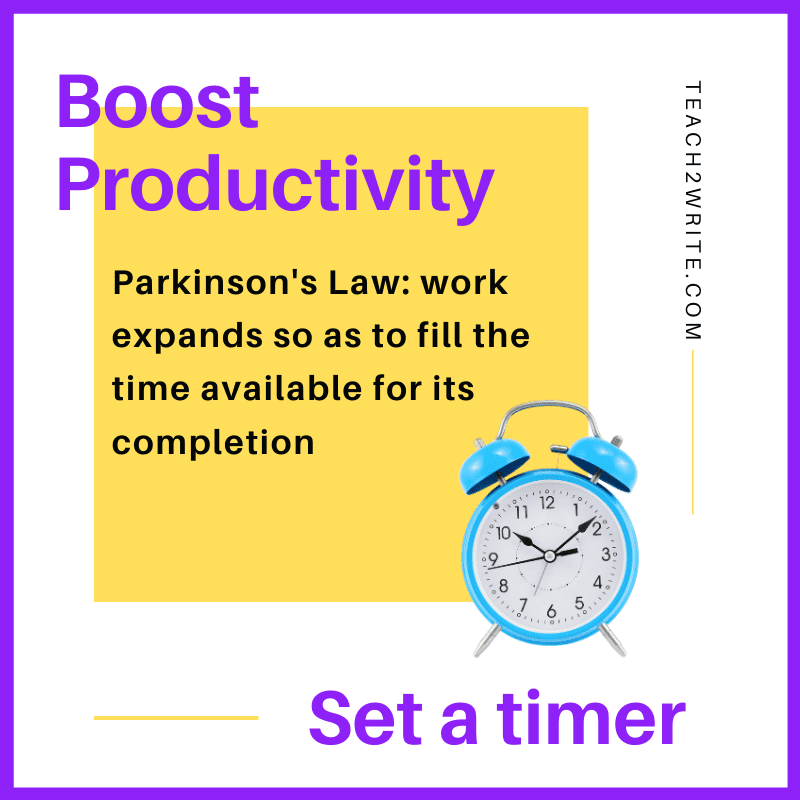
How to start a writer’s workshop for middle school
These are the steps I’m taking this year to start my writer’s workshop, and I’ve used these for quite a few years now. Some steps may be done simultaneously on the same day. There will be future blog posts about each of these steps.
- Create a welcoming classroom space.
- Decide what technology you will be using – hardware and software. If you need help with Canvas LMS, click here .
- Send out your course syllabus with materials students will need for your course.
- Create a course outline based on your school’s curriculum guides or state standards.
- Plan and post your first 2 weeks of lessons and assignments into your online course (if you are using technology in your course).
- Establish classroom expectations and routines.
- Build a classroom community of writers.
- Show students how to navigate your course online.
- Write a letter to your students and have them write back to you as their first assignment.
- Confer with your writers as they are writing their letters and make a list for yourself of things students need to work on with their writing.
- Set up writing journals and begin writing workshop routines.
- During mini-lessons, teach the 5 tricks that break writer’s block .
- Students write in journals to gather ideas and begin writing pieces.
- Assign a short writing piece and confer with writers during workshop time.
- Teach ONE revision strategy during a mini-lesson, depending on your curriculum.
- Teach ONE editing strategy during a mini-lesson, depending on your curriculum.
- Allow writers to revise and edit before turning in their first short writing assignment.
- Celebrate your writers with the Author’s Chair presentations.
- Continue writer’s workshop by using daily bell ringers, mini-lessons about writing and reading, sharing, writing/reading workshop, conferencing, and turn and talk.
- Breakaway from the writer’s workshop routine every once in a while to play – escape rooms, read-arounds, watch a movie, celebrate authors, group brainstorm, catching up on overdue assignments.
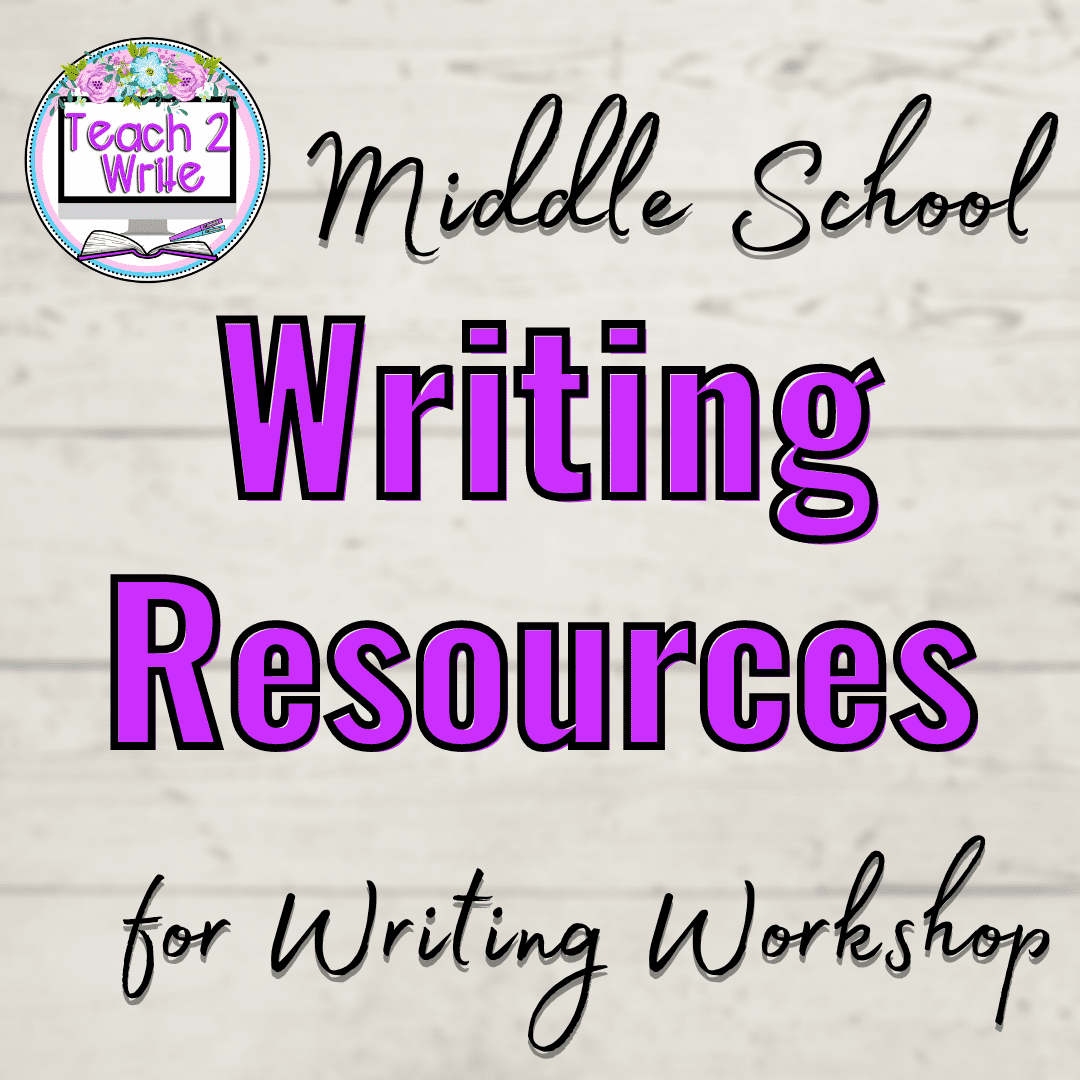
References for Writing Workshop in Middle School
Atwell, Nancie. In the Middle: A Lifetime of Learning about Writing, Reading, and Adolescence. Heinemann, 2014.
Graves, Donald H. “All Children Can Write.” http://www.ldonline.org/article/6204/
Lane, Barry. After The End: Teaching and Learning Creative Revision. Heinemann, 2015.
Murray, Donald. “The Listening Eye: Reflections on the Writing Conference” https://secure.ncte.org/library/NCTEFiles/Resources/Journals/CE/1979/0411-sep1979/CE0411Listening.pdf
Learning materials for Writing Workshop for Middle School
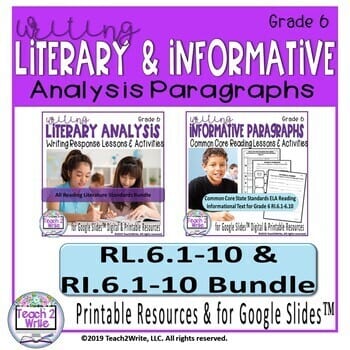
Writing Literary & Informative Analysis Paragraphs
Students struggle with writing a literary analysis , especially in middle school as the text grows more rigorous, and the standards become more demanding. This resource is to help you scaffold your students through the process of writing literary analysis paragraphs for CCSS ELA-Literacy RL.6.1-10 for Reading Literature and RI.6.1-10 Reading Information. These paragraphs can be later grouped together into writing analytical essays.
PEEL, RACE, ACE, and all the other strategies did not work for all of my students all of the time, so that’s why I created these standards-based resources.
These standards-based writing activities for all Common Core Reading Literature and Informational standards help scaffold students through practice and repetition since these activities can be used over and over again with ANY literary reading materials.
Included in these resources:
- step-by-step lesson plans
- poster for literary skills taught in this resource
- rubrics for assessments standards-based
- vocabulary activities and notes standard-based
- graphic organizers that incorporate analysis of the literature and information standard-based
- paragraph frames for students who need extra scaffolding standard-based
- sentence stems to get students started sentence-by-sentence until they master how to write for each standard
- digital version that is Google SlidesTM compatible with all student worksheets
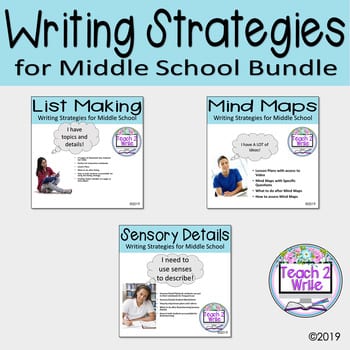
List Making: This resource helps students make 27 different lists of topics they could write about.
Sensory Details: This resource will help you to teach your students to SHOW, not tell. Descriptive writing with a sensory details flipbook and engaging activities that will get your students thinking creatively and writing with style.
Included in this resource are 2 digital files:
- Lesson Plans PDF that includes step-by-step lesson plans, a grading rubric to make grading faster and easier, along with suggestions for what to do after mind mapping.
- Google SlidesTM version of the Student Digital Writer’s Notebook allows students endless amounts of writing simply by duplicating a slide.
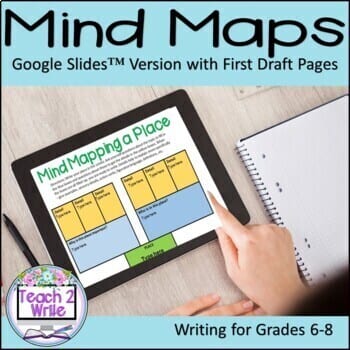
Recent Posts
- Text Features Vs Text Structures: How to introduce text structures to your students
- Nurture a Growth Mindset in Your Classroom
- 3 Middle School Writing Workshop Must-Haves
- Writing Strategies for Middle School Students
- Writing Response Paragraphs for Literature
- September 2023
- October 2022
- August 2022
- January 2022
- October 2021
- February 2021
- January 2021
- February 2020
- January 2020
- December 2019
- November 2019
- September 2019
- February 2019
- October 2018
- February 2018
- Creative Writing
- middle school writing teachers
- Parent Help for Middle School Writers
- writing strategies and techniques for writers
- Entries feed
- Comments feed
- WordPress.org
Privacy Overview
Walking by the Way
the road to inspired learning
Eight Free Creative Writing Lessons
February 17, 2012 by Ami 17 Comments
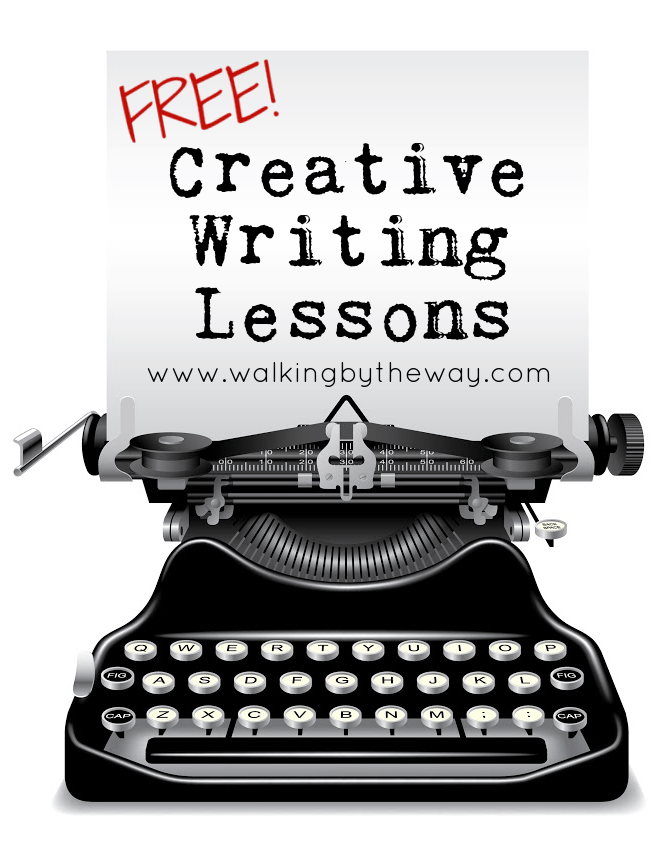
I know I throw around the word favorite all the time. But this is the truth: teaching creative writing lessons is my favorite.
I have taught creative writing enrichment for summer school students. I have taught creative writing in various homeschool settings and co-ops. I have taught big students and little students. And I love it.
Since I love to share homeschool co-op class ideas , I have compiled the creative writing lessons from a co-op class that I taught.
Creative Writing Lessons for a Homeschool Co-op Class
First, please remember that any teacher can use these creative writing lessons. You don’t need to be teaching homeschoolers. You can be a classroom teacher or a homeschool teacher at home with one student. You can even be a librarian who needs a fun program series.
Second, I used these creative writing lesson plans with upper elementary students (with maybe a few 7th graders thrown in). However, you can adapt and use them for older students or younger students!
Creative Writing Lesson Plans
Creative writing lesson one.
The first lesson focuses on cliché and metaphor. It prompts students to consider how words matter.
Grab lesson one here .
Creative Writing Lesson Two
The second lesson teaches students about sensory details: why they are important and how to include them in their writing. Students will begin using sensory details to evoke smells and sounds and sights.
Grab lesson two here.
Creative Writing Lesson Three
The third lesson introduces showing vs. telling. Students learn how to recognize authors who utilize showing, and students are able to articulate the difference between showing and telling.
Grab lesson three here.
Creative Writing Lesson Four
The fourth lesson teaches students how to capture images. We use examples of poetry and prose to discuss this important writing skill.
Grab lesson four here.
Creative Writing Lesson Five
The fifth lesson introduces the story elements of character and conflict.
Note: You may choose to split this lesson into two lessons since it covers two big elements. I only had nine weeks with my students, so I had to jam character and conflict together.
Grab lesson five here.
Creative Writing Lesson Six
The sixth lesson introduces the students to point of view and perspective. We have fun reading poems and using pictures to write descriptions from different points of view.
Grab lesson six here.
Creative Writing Lesson Seven
The seventh lesson puts everything we’ve learned together. I read the students some fractured fairy tales, and we watch some, too. Students then use the prewriting activities and their imaginations to begin drafting their own fractured fairy tales.
Grab lesson seven here.
Creative Writing Lesson Eight
The eighth lesson focuses on revision. After a mini-lesson, students partner up for peer editing.
Grab lesson eight here .
For our final class day, students bring revised work, and I host coffee shop readings. This is a memorable experience for students (and their teacher).
Creative Writing Lessons FAQ
Since posting these creative writing lessons, I have had lots of questions. I decided to compile them here in case you have the same question.
Q: What are copywork quotes? A: Copywork quotes are simply great quotes that students copy as part of their homework assignments. You can use any quotes about writing. I’ve included my favorites throughout the printable packs.
Q: Can I use this with a younger or older student? A: Absolutely! Just adapt it to meet the needs of your student.
Q: Can I use this for my library’s programming or my homeschool co-op class? A: Yes! I just ask that it not be used for profit.
Do you have any questions about teaching creative writing? What’s your biggest hang-up when it comes to teaching creative writing? I’d love to hear from you and help you solve the issue.

January 7, 2016 at 1:57 pm
Hi Theresa,
As long as you are not profitting from using them, they are yours to use! Enjoy! Wish I could be there to help facilitate all those young writers!
[…] Creative Writing Class […]
Leave a Reply Cancel reply
Your email address will not be published. Required fields are marked *
Save my name, email, and website in this browser for the next time I comment.
Solar Eclipse 2024! 15 Creative Writing Prompts Science Meets ELA! Middle School Myths Time Travel
- Earth science
- Language Arts
- Resource Type
sold by The STEAM Queen
View shop page
Item Details
Digital Download
INSTANT DOWNLOAD Files will be available for download from your account once payment is confirmed. Learn more . Please contact the seller about any problems with your order using the question button below the description.
Item description
Ignite Imagination with Solar Eclipse Creative Writing Prompts!
Explore the wonders of the Total Solar Eclipse on April 8, 2024 , with our Solar Eclipse Creative Writing Prompts for Middle School!
Designed to inspire, these prompts offer boundless opportunities for students to unleash their creativity while making meaningful connections to this celestial event.
Take a closer look at what’s inside this exciting pack!
✔️ What’s Included:
➞ 15 Unique Prompts to Inspire Exploration:
Dive into eclipse mythology , time travel , animal perspectives , and more with a diverse array of engaging writing prompts.
Encourage students to express themselves in various writing styles, fostering exploration and experimentation.
➞ Effortless Integration into Your Classroom:
No prep required — simply print and go!
Perfect for quick warm-ups during the eclipse season or as no-prep sub plans.
Each prompt includes a lined student response page , and all prompts are provided on a master list for easy organization, ensuring hassle-free implementation.
➞ Enhance Learning & Writing with Visual Aids and Resources:
Deepen students’ understanding of solar eclipses with an accompanying diagram set illustrating the eclipse process.
Enrich students’ scientific vocabulary with a comprehensive glossary of eclipse terms, providing essential background knowledge for their writing.
➞ Empower Student Choice and Voice:
Offer students the freedom to choose prompts that resonate with their interests, empowering them to express their unique perspectives.
Foster a positive and creative learning environment where students can explore the science of solar eclipses through their writing.
☄️ BONUS! Group Work Expectations Poster:
Reusable poster that reinforces expectations for working in groups.
Keep a large version posted year-round!
You will LOVE the convenience of saying “‘O’ is for…?” and hearing your class remind themselves aloud with “On task at all times!”
- Also includes a surprise sample from our Solstice & Equinox Activity Pack! ❤️
✔️ Why Choose Our Writing Prompts?
➞ Stimulate Imagination:
Inspire students to think creatively and explore the beauty and mystery of solar eclipses through their writing.
➞ Effortless Integration:
Seamlessly incorporate science content with language arts skills, providing students with a holistic learning experience.
➞ Quick and Versatile:
Perfect for quick warm-ups or as no-prep sub plans, these prompts can be used again and again throughout the eclipse season.
➞ Take A Break from Formulaic Writing!
Move beyond traditional writing formats like CER, RITTE, RADDS and the rest — instead, offer students a refreshing and engaging approach to practice essential writing skills while bridging the gap between science and language arts.
☄️ Make the Most of this Special Eclipse Event!
Prepare your students for the solar eclipse buzz this spring with our Solar Eclipse Creative Writing Prompts for Middle School.
Add this resource to your plans and give students the opportunity to memorialize this rare United States total eclipse with a piece of writing that is all their own.
Don’t miss out on this stellar opportunity to engage your students in an unforgettable writing experience!
Check out the previews above for a closer look!
☄️☄️☄️ Looking for a More Comprehensive Set of Eclipse Resources?
Our interactive slide deck includes:
background information
diagrams and models
simulator and eclipse maps directions and guided prompts
drag-and-drop activities
Our activity pack includes:
articles and worksheets
scavenger hunt
crossword puzzle, word search and more!
Click HERE to get the slide deck AND activity pack bundled at a discount!
❤️ You Might Also Like:
➥ Back to School Planning Tools:
- Ultimate Planning Pack: Daily & Weekly Lesson Planners PLUS Student Assignment Tracker – Fully Editable!
- Lesson Planning 2-Pack: Weekly & Daily Editable Templates
- Editable Weekly At-A-Glance Lesson Planner
- Editable Student Progress Tracker Pack
➥ Back to School Activities:
- Science of SEL: Goal Setting – Made by a science teacher but can be used in the early weeks of any middle or high school setting – support your students in understanding and applying the neuroscience behind effective goal-setting.
- Back To School Science – Icebreaker Dice Game
- Back to School Science – Create Your Own Signature Species!
- Back to School Science – Science Selfie About Me Activity
- Back to School Science – BINGO Icebreaker Game
♛ Let’s Connect!
- Visit www.steamqueenteaching.com/blog for Middle School Tips & Tricks
- TikTok | Facebook
From the same author
Science syllabus editable template middle and high school policies contract lab safety rules & more.
by The STEAM Queen
Set the Stage for a Successful School Year with Our Editable Science Syllabus! Are you ready to start the school year on the right foot?Our Editable Science Syllabus is designed to make…
- Back to School
Science of Gratitude Project Research CER Middle School Thanksgiving Science Investigation Surveys
Discover the profound impact of gratitude on well-being with our Science of Gratitude CER & Project Pack!Tailored for science, health, and advisory educators at the middle school level and above, this…
- Thanksgiving
- Lab Activities
- PowerPoint Presentations
Black History Month Science Ultimate Bundle! Inspiring Scientists Lessons Articles BHM Middle School
Unlock the Ultimate Black History Month Science & STEM Collection!Explore our BHM Scientist Biography Pack Lesson Slides & Article Set Bundle, a powerful resource designed to engage your students, promote diversity,…
- Black History Month
Water Cycle Storyboard Narrative Project for Middle School Task Posters & More!
Embark on a captivating journey through the water cycle with Journey of a Water Molecule - an engaging and interdisciplinary task designed to bring art, ELA, and science together in a captivating…
100 Days of School Science Scavenger Hunt Activity Pack Middle School 100th Day of School Slides
Engaging 100 Days of School Science Activity Set for Middle School Science Teachers! Are you a middle school science teacher searching for an exciting and versatile activity to celebrate the 100th…
Back to School Lesson Planner Bundle Weekly Daily Templates & Progress Trackers
Back-to-School Lesson Planning Bundle: Organize, Streamline, and Excel! Kickstart your Back-to-School season with this powerful bundle, specially designed for busy middle and high school teachers juggling multiple subjects.These customizable resources will…
- Not Grade Specific
- For All Subjects

CREEES Professional Resources Forum
Center for Russian, East European and Eurasian Studies at The University of Texas at Austin
Grad Program: MA in Creative Writing in Russian (Moscow)
Application opens February 2019
For fiction/non-fiction writers in Russian.
MA “Creative Writing” is:
- Practical and theoretical/historical courses, such as Creative Writing Workshop , Storytelling in Different Media , Literary Editing , Poetics of Novel and Screenwriting ;
- Unique professors and teachers, among them famous Russian writers, screenwriters and critics – Marina Stepnova , Lyudmila Ulitskaya , Lev Danilkin , Sergey Gandlevsky and Maya Kucherskaya as well as prominent philologists, authors of academic and non-fiction books Oleg Lekmanov , Ekaterina Lyamina and Alexey Vdovin ;
- Participation in open readings, discussions and literary expeditions , publications in students’ projects ;
- International exchange – lectures and workshops of the leading specialists in Creative Writing, students’ exchange in the best world universities;
- Help and support in the process of employment in various publishing houses, editorials, Mass Media, high schools and universities and PR;
- Creation and participation in cultural projects ;
- Flexible timetable enabling students to work while studying.
Our graduates already work in the best publishing houses, universities and schools in Moscow. Their writing is published in the authoritative literary magazines. Their projects (such as prize “_Litblog” for the best literary blogger and first Creative Writing Internet resource in Russian “Mnogobukv” and collections of prose) have gained much attention.
Language of instruction: Russian
You can apply to non-paid place as a foreign student in February. Looking forward to seeing you at Higher School of Economics!
More information about the programme: https://www.hse.ru/en/ma/litmaster

IMAGES
VIDEO
COMMENTS
Middle School Writing Lessons. So what's in our lesson plans? Check it out: 1: Who's the Goat: Debating the Greatest of All Time. 2: Mapping the Neighborhood: Creating Maps to Generate Story Ideas. 3: My Obituary: The Story of Your Life. 4: Double, Double, Toil & Trouble: Writing Recipes for Magic Potions. 5: My Principal is an Alien ...
An easy lesson plan for creative writing that will pay off later is to activate prior knowledge. Brainstorm creative, memorable, unforgettable stories with students. Share your thoughts too! You will start to build relationships with students who share the same tastes as you (and those that are completely different!).
Prompts for Exploring Emotions. The Joy of Finding a Lost Toy. Revisit a childhood memory of losing a cherished toy and the overwhelming happiness of eventually finding it. A Moment of Overcoming Fear. Write about when you faced a fear head-on and emerged stronger and braver on the other side. The Bittersweet Farewell.
Here are 10 of our favorite story telling activities that inspire students: 1. Write an "I am from" poem. Students read the poem "I am From" by George Ella Lyon. Then, they draft a poem about their own identity in the same format Lyon used. Finally, students create a video to publish their poems.
Here are five lesson plans from the 2022-2023 school year for middle and high school students, from our Writing the Community teaching artists!. A Poem About Joy: In this lesson plan, inspired by Ross Gay's "Sorrow Is Not My Name," Teré Fowler-Chapman asks young poets to come up with a list of things that bring them joy and then write a poem inspired by one of the items on that list.
Lacking inspiration for a middle school writing project? Get your pencil moving with 100 varied creative prompts for narrative, informational, argument, and poetry writing. ... 100 Creative Writing Prompts for Middle School By Jennifer Gunner, M.Ed. Education , Senior Writer . Updated May 19, 2021 Image Credits.
Whatever the case may be, these 20 creative writing activities for middle school will have all of your students showing their creative prowess. 1. I Am From ... Following this lesson plan, your students will be able to write their own simple yet eloquent poems and feel like accomplished writers. Learn More: NYLearns.
The "I Remember" Poem. Students use personal experience to write creatively in this poetry lesson plan. They'll think back and choose a dozen…. Subjects: Reading and Literature. Poetry. Creative Writing. Download. Add to Favorites.
Our 2020-21 Writing Curriculum for Middle and High School. A flexible, seven-unit program based on the real-world writing found in newspapers, from editorials and reviews to personal narratives ...
Middle school writing lessons can be found in this blog post. Writing is a pillar of an ELA classroom. Keep your foundation strong with new ideas and inspiration. ... Creative Writing Lesson Ideas. It can be hard to remember that students enjoy the opportunity to flex their creative muscles with creative writing assignments. In this blog post ...
Creative Writing Lesson Plans. April 15, 2020 / Writing. Creative writing is an important writing style for students to learn about and experience on their journey to becoming writers. Helping students embrace their creativity is a great way to get students writing. Students enjoy writing more when they get choice over their topic and format.
In the middle school world, non-fiction is the primary focus of classroom writing. Therefore, a creative writing unit can provide a breath of fresh air. This unit guides students through a step-by ...
8. Out of a Hat. Teach your students about the components of different literary forms by discussing writing styles (narrative, expository, descriptive, and persuasive). Write each form on a small piece of paper and, you guessed it, toss it in a hat (or a bucket or any type of container).
Writer's workshop is a method of teaching writing developed by Donald Graves and Donald Murray, amongst other teacher-researchers. The writer's workshop provides a student-centered environment where students are given time, choice, and voice in their learning. The teacher nurtures the class by creating and mentoring a community of writers.
6 Ways to Teach Writing reatively Teach your students the fun aspects of writing. Students of all ages write short stories and papers, from younger elementary-school writers through college-age students.
Creative Writing Lesson Plans. ... Story Swap Grades 3-5 A fun activity for your students to work on beginning, middle, and end. "I use a story swap to teach beginning, middle, and ending parts of a story. ... Submitted by: Judy Zelenda a third grade teacher at Schuyler Grade School in Schuyler, Nebraska. This idea was published in the NEA's ...
4.8. (43) $17.00. Zip. Google Apps™. This Creative Writing Workbook includes 25+ different creative writing projects + activities for students to complete! It is designed for grades 6-12 and includes student descriptions, student examples, brainstorming pages, and rubrics for each project!This resource provides teachers with a unique way to ...
Dive into a spooky-type short story and character analysiswith "The Most Dangerous Game.". "Most Dangerous Game" Character Analysis Workbookfrom Teach BeTween the Lines. MAKER SPACE. This creative lesson to inspire secondary writers is a newer approach. Turn your writer's workshop into a maker spacewith these unique ideas from Spark ...
First, please remember that any teacher can use these creative writing lessons. You don't need to be teaching homeschoolers. You can be a classroom teacher or a homeschool teacher at home with one student. You can even be a librarian who needs a fun program series. Second, I used these creative writing lesson plans with upper elementary ...
I work to foster a positive learning environment for all of my students and I ask students to meet the following expectations: 1. Listen and follow directions. 2. Raise your hand before speaking. 3. Keep your hands, feet, and objects to yourself. 4. Respect your classmates, your teacher and our learning environment.
Creative Writing: Our Choices for 'The Second Choice" by Th.Dreiser A few weeks ago we read a short story "Second Choice" by Theodore Dreiser which stirred quite a discussion in class. So, the students were offered to look at the situation from a different perspective and to write secret diaries of some characters (the author presented them as ...
Item description . Ignite Imagination with Solar Eclipse Creative Writing Prompts! 🌞 🔆 🌞. Explore the wonders of the Total Solar Eclipse on April 8, 2024, with our Solar Eclipse Creative Writing Prompts for Middle School!. Designed to inspire, these prompts offer boundless opportunities for students to unleash their creativity while making meaningful connections to this celestial event.
To prepare students for the 21st century, students must be taught not only how to think, but also to think from a global perspective. As an extension of the Sister Schools Project of Dade County, Florida, this practicum centered on developing a Moscow-Florida, cross-cultural educational linkage between a school in Moscow, Russia, and a middle school in South Florida.
International exchange - lectures and workshops of the leading specialists in Creative Writing, students' exchange in the best world universities; Help and support in the process of employment in various publishing houses, editorials, Mass Media, high schools and universities and PR; Creation and participation in cultural projects;